PREHISTORY ON SERBIA’S LAND
CULTURAL TREASURES of SERBIA
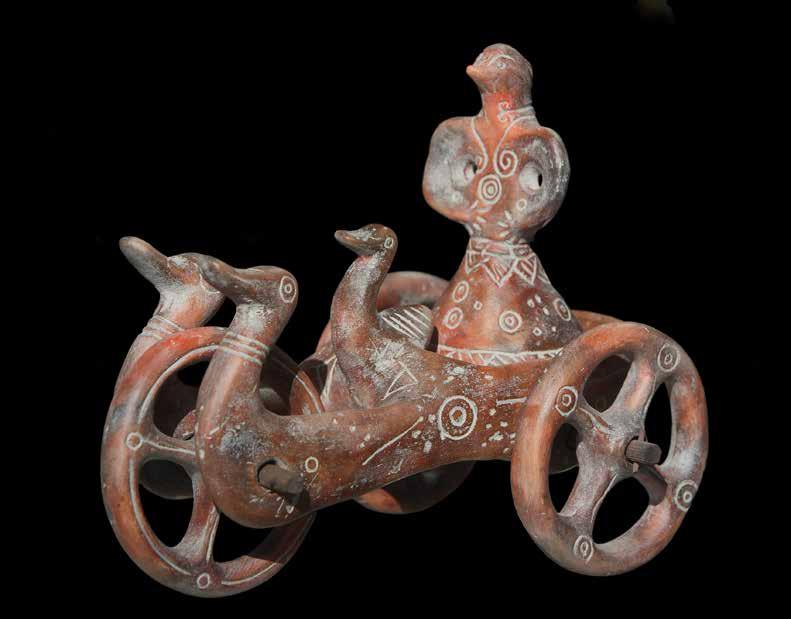
www.serbia.travel NATIONAL TOURISM ORGANISATION of SERBIA THE
MAP OF SERBIA
LEGEND International Border Settlement Signs City County Center Rivers and Lakes Highway Highway Regional Road Airport Archeological Site
 Cover photo: Dupljaja chariot, Middle Bronze Age
Cover photo: Dupljaja chariot, Middle Bronze Age
PREHISTORY ON SERBIA’S LAND
More than forty thousand years ago, humans inhabited the basins of the big rivers and the fertile lowlands of Serbia. During this pe riod, the land became the home for the first civilizations and the oldest cultural centre in Europe.
The Danube River, on whose banks primordial settlers found safe ty, and whose flow – the oldest European artery – connected those settlers’ communities, played a crucial role. To the Danube basin’s communities of fishermen and land-tillers, the river was life itself; a quick way of communication and transportation; the first trad ing road and provided the direction in which culture flowed. Ancient myths of the origin of the world are connected with the Danube; the first monumental art in Europe (the fishlike deities of Lepenski Vir) were created there, and a metropolis of the Stone Age (Vinča) - the most glittering culture of European prehistory was developed here.
INTRODUCTION. RISOVAČA CAVE.
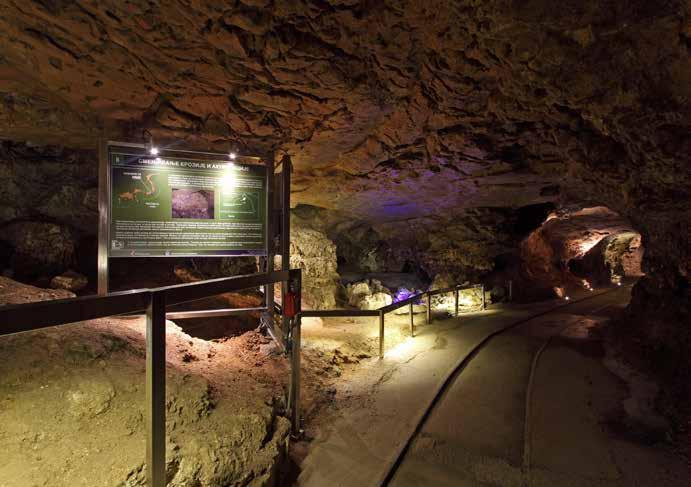
RISOVAČA CAVE
Risovača Cave, near Aranđelovac, 74 km to the south of Belgrade, preserves the oldest traces of life of the prehistoric people who inhabited the soil of Serbia during the Palaeolithic period. In the cave, numerous fossil remnants of prehistoric animals, traces of the use of fire, as well as tools made of roughly chiseled stone and bones were discovered. Those objects are exhibited at the Museum in Aranđelovac and in the cave itself, which has been transformed into a subterranean museum of the Palaeolithic pe riod - the only museum of that kind in the country.
Tourism Organisation of Aranđelovac Municipality
Phone: + 381 725 575
The National Museum of Aranđelovac
Phone: +381 34 712 415, 702 415
www.serbia.travel
www.bukovickabanja.rs
www.nmar.rs
Risovača cave, Paleolithic period
LEPENSKI VIR
Lepenski Vir, is a settlement dating from the Middle Stone Age, which contains an unusual and a very advanced prehistoric cul ture which is located in the Đerdap Gorge, on the Danube River, 130 km from Belgrade.

Lepenski Vir is the oldest habitat on these territories. There are over 100 trapezoid remains of the houses in the area of around 3,000 m2, all of which have been carefully arranged. Lepenski Vir also produced the very first examples of monumental sculpture in Europe, dating from 6000. B.C., amongst which, the most famous ones are “fishlike” human heads.
Due to a rise in the level of the Danube, the locality has been more recently dislocated to a higher level – 17 meters above the old one. Numerous objects made of bone decorated with ornaments and decorative ceramics can be seen at the Museum of Lepenski Vir in the Đerdap Gorge.

Tourism Organisation of Majdanpek Municipality
Phone: +381 30 590 184, 596 184 www.toom.rs
Lepenski Vir – Archeological Site
Phone: +381 62 216 559, +381 30 501 501
E-Mail: office@lepenski-vir.org www.lepenski-vir.rs
LEPENSKI VIR
Lepenski Vir sculpture, 6000 B.C.
Lepenski Vir settlement, 6000 B.C.
Vinča’s
VINČA
On the Danube’s right bank, 14 km down the river from Belgrade, there is what is often referred to as the “cradle of the first Europe” – the prehistoric settlement of Vinča. The Vinča culture, which spread throughout the Balkans between 5500 and 4000 BC, was named after this settlement.
Vinča is not only important as it represents the most sumptu ous Neolithic culture on these territories but it is also the highest reach of prehistory in Europe. As an urban environment, with reg ularly arranged streets and buildings, the settlement had a large number of craftsmen and traders which gave way to a rich, artistic legacy of production and as such, Vinča alters our very compre hension of prehistory.
Vinča people had knowledge of mining; they mastered the produc tion of copper and used it for making axes and ornaments; they produced richly decorated ceramics and unusual figurines of fe male deities and they used linear script, which is considered to be one of the oldest known scripts.

A portion of the enormously rich Vinča culture is exhibited at the Museum in Vinča today, as well as at the National Museum in Bel grade.

VINČA
Museum
Lady of Vinča, 5500 – 4000 B.C.
pottery, 5500 – 4000 B.C.
Belgrade Tourism Organisation Phone: +381 11 2635 622, 2635 343 www.tob.rs The Belgrade City
Phone: +381 11 2630 825, + 381 11 3283 504 www.mgb.org.rs
PLOČNIK. DUPLJAJA. STARČEVO. ŽIDOVAR.
PLOČNIK

On the way to Djavolja varoš, within reach of Prokuplje in the south of Serbia, there is Pločnik, an archeological site from the times of the Vinča culture. It is the locality where the remains of a settlement dating around 5500 BC have been preserved. Pločnik used to be a center for processing copper and one of the first sites of the early metallurgy of the Stone Age. Today, a prehistorical vil lage has been built on the locality, representing a very authentic reconstruction of the original settlement. For that reason, Pločnik represents a sort of tourist attraction of the Toplica River region.
DUPLJAJA
Near the village of Dupljaja in the vi cinity of Bela Crkva, 95 km from Bel grade and 35 km from Vršac, there are remains of a prehistoric settlement originating from the Middle Bronze Age. On this locality, two carts made of terracotta, designed for a prehis toric cult, were discovered. On the carts, human figures with the bird’s beak are symbolically represented. The carts from Dupljaja are kept at the National Museum in Belgrade, and the collection of stone findings –at the City Museum of Vršac.
Tourism and Sports Centre Prokuplje www.tscpk.com
National Museum of Toplice Phone: +381 27 321 694 www.muzejtoplice.org.rs
Tourism Organisation of Bela Crkva Phone: +381 13 851 777
City Museum – Vršac Phone: +381 13 838 053 www.muzejvrsac.org.rs
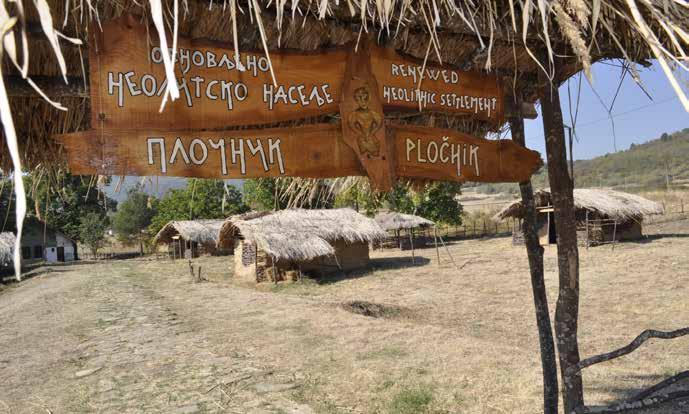 Pločnik settlement, 5500 B.C.
Red hair goddess Starčevo culture 6300-5300 B.C.
Pločnik settlement, 5500 B.C.
Red hair goddess Starčevo culture 6300-5300 B.C.
IMPRESSUM
At Starčevo, in the immediate vicinity of Pančevo, 20 km from Bel grade, are the remains of the oldest culture of the Early Stone Age to be found in the Balkans, tracing the beginning of agriculture and the first permanent settlements in the fifth millennium B.C., which are well preserved. The settlement on the Danube River’s bank was founded on oval-shaped sod houses. It is here that ce ramic pots painted with red and black ornaments,, together with figurines made of baked soil, can be seen at the Museum of Vo
Tourism Organisation of Odžaci
Phone: +381 25 5742 212, 5742 308 www.turizamodzaci.rs
Musem of Vojvodina Phone: +381 21 420 566, 526 555 www.muzejvojvodine.org.rs
ŽIDOVAR
In the third century B.C. the Celts arrived in the Ser bian Danube basin, bringing with them the potter’s wheel and a new type of fortified settlement. One such settlement was discovered in the vicinity of Vršac, on the locality of Židovar. Apart from the remains of architecture, a hoard of silver orna mentation and other objects made of silver has also been discovered in Židovar and today can be seen at the Museum in Vršac.
Tourism Organisation of Vršac Phone: +381 13 832 999, 831 055 www.vrsacturizam.rs
City Museum – Vršac Phone: +381 13 831 055 www.muzejvrsac.org.rs
PREHISTORY ON SERBIA’S LAND
Publisher
National Tourism Organisation of Serbia Čika Ljubina 8, Belgrade, Serbia Tel: +381 11 6557 100
Fax: +381 11 2626 767
E-mail: office@serbia.travel www.serbia.travel
serbiatourism serbia
For publisher: Marija Labović MSc, Acting Director
Editor: Smiljana Novičić
Text: Jasmina Milovanović
Design: Marijana Markoska
Photography: Dragan Bosnić, Branko Jovanović, Julka KuzmanovićCvetković
Translator: Slobodan Rakić
Language editor: Russell Stenhouse Mapping board: Merkur SV Map consultant: Olgica Miljković PhD
Print: Futura, Novi Sad
The 9th edition in English, 2022 Volume: 3,000 ISBN 978-86-6005-656-8
Cartographic no: 06 broj: 034-01-01-65/2022 - 13.04.2022
CIP -

ASSOCIATION OF TOUR OPERATORS IN SERBIA
YUTA - National association of travel agencies of Serbia www.yuta.rs/sr/receptiva/clanice-odbora-receptiva.asp
MILOVANOVIĆ, Jasmina, 1972The Cultural Treasures of Serbia / [text Jasmina Milovanović ; translator Slo bodan Rakić]. - 8th ed. in English. - Belgrade : National Tourism Organisation of Serbia, 2021 (Belgrade : Službeni glasnik). - [44] str. : fotogr. ; 24 x 20 cm
Izv. stv. nasl.: Kulturno blago Srbije. - Kor. nasl. - Podatak o autoru preuzet iz kolofona. - Tiraž 3.000. - Sadrži: Prehistory on Serbia’s Land ; The Roman Em pire in Serbia ; Monasteries of Serbia ; Fortresses in Serbia ; Galleries in Serbia ; Museum of Serbia ; Industrial heritage in Serbia / [text Jasmina Milovanović].
978-86-6005-656-8 (broš. u zaštitnom omotu)
www.serbia.travel
Каталогизација у публикацији Народна библиотека Србије, Београд 338.48(497.11)(036) 908(497.11)(036)
ISBN
а) Србија -- Водичи COBISS.SR-ID 39145225
THE
of
PREHISTORY ON SERBIA’S LAND
CULTURAL TREASURES
SERBIA www.serbia.travel
THE ROMAN EMPIRE IN SERBIA
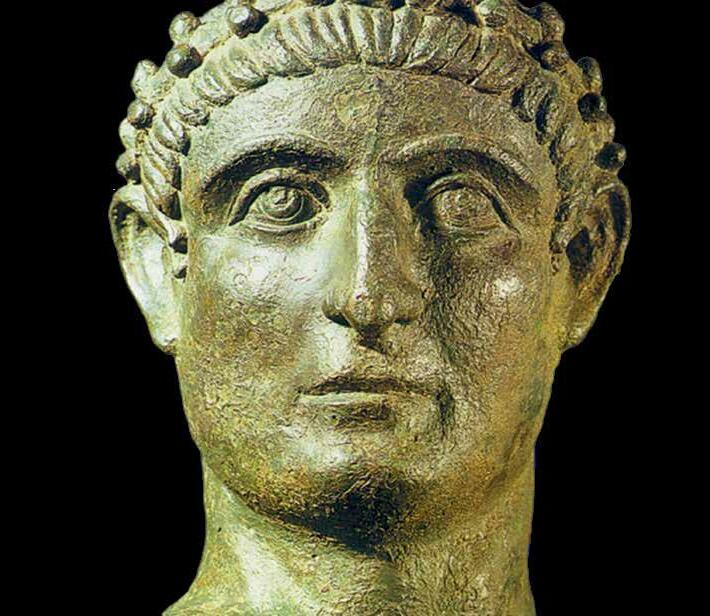
THE CULTURAL TREASURES of SERBIA
NATIONAL TOURISM ORGANISATION of SERBIA
www.serbia.travel
MAP OF SERBIA

Cover photo: Emperor Constantine, IV century A.D.
LEGEND
International Border Settlement Signs City County Center
Rivers and Lakes Highway Highway Regional Road Airport
Archeological Site UNESCO World Heritage
SERBIA IN THE ERA OF THE ROMAN EMPIRE
The territory of today’s Serbia, an intersection of ancient roads and a bridge connecting the cultures of the West and the East, was a significant frontier zone of the Roman Empire in late ancient times.
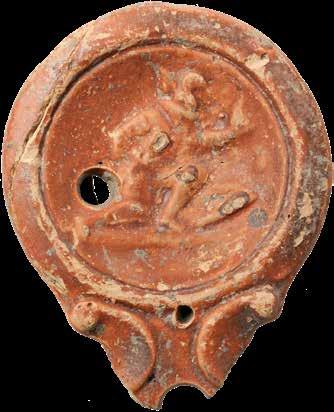

At the beginning of this era, the big Roman Empire established its Balkan frontier – Limes on the Danube. Tens of fortified military camps were raised along this line of defence, while the hinterland was intersected by a network of roads connecting distant parts of the empire. Where the roads intersected, big and rich cities – the capitals of the provinces and cultural centres – emerged.
The rich diversity of monuments dating from the Roman past, as well as the fact that 16 Roman emperors were born on the Serbian soil and lived there, are a testimony to the great rise of this terri tory. Visitors can follow the paths of the Roman emperors, visit the empire’s cities and palaces and discover Serbia’s unique Ro man legacy which is a part of the world’s cultural heritage.
www.serbia.travel
R earrangement of life scene in Viminacium, II century A.D.
Roman lantern, II – III century A.D.
INTRODUCTION
The Sun watch, II century A.D.
SIRMIUM
Sremska Mitrovica, town 75km from Belgrade, lies on the foun dations of an ancient Roman town – Sirmium. Having been es tablished at the intersection of the river and overland roads, the settlement of Sirmium developed into one of the biggest metrop olises of that time.
As early as in I century A.D., Sirmium was one of the main centres of the Roman army, only to later become a big and rich trade city, the capital city of the province of Pannonia and, ultimately, one of the empire’s residences. Emperors Decius, Probus and Maximinus were born there and Theodosius was crowned emperor there. The settlement was belted by defensive walls and there was a port on the river Sava. In III and IV centuries, Sirmium was a luxuri ous town, with a square in the centre of the town, wide streets, public bathing establishments and palaces richly decorated with mosaics.
Tourism Organisation of the Town of Sremska Mitrovica
Phone: +381 22 618 275 www.tosmomi.rs
Sirmium Emperor’s Palace Archeological Site
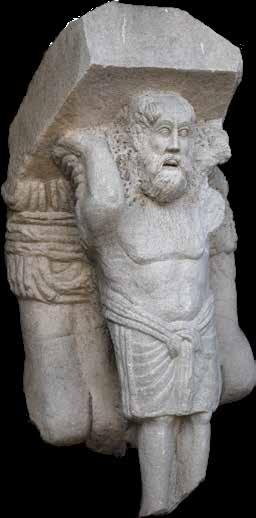
Phone: +381 22 618 817 www.carskapalata.rs
Today, the remains of the emperor’s palace, the Christian basilica, the aqueduct, the granary, the racecourse and the colonnades can be seen in the town centre of Sremska Mitrovica, while frescoes and mosaics are exhibited at the Museum of Srem in Mitrovica.
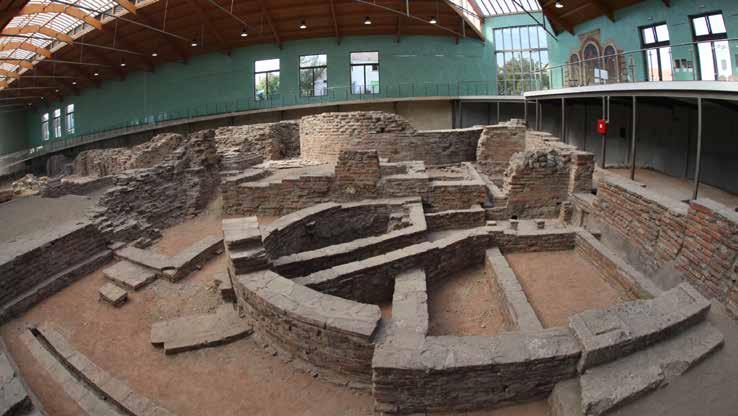
SIRMIUM
Sirmium Emperor’s Palace Archeological Site, III-IV century A.D.
Exhibition of ancient roman tombs, II - IV century A.D.


SINGIDUNUM
The Roman past of Belgrade began in I century B.C., when Sin gidunum – a Celtic fortified settlement – was conquered. Singi dunum was a city greatly significant for the defence of the Danube Limes which had been built on the foundations of a military camp that had been raised at the estuary of the Sava and the Danube riv ers and at the intersections of the roads connecting the provinces of Moesia, Pannonia and Dalmatia.
Singidunum was given the status of a free Roman city and was the permanent residence of Flavius’ IV legion. It is almost impossible not to find a trace of the Roman era in the old city of Belgrade. Kalemegdan preserves the remains of the Roman castrum, the aqueduct, a cistern and a graveyard, while underneath Belgrade’s pavements, priceless archeological treasures lie.
At the Roman Hall of Belgrade City Library, parts of a Roman fort can be seen; a collection of gravestones are exhibited in the under ground tunnels of Barutana (Engl. Powder-works), and a collec tion of ornaments including dishes and pieces of art are kept at the National Museum and the Museum of Belgrade City.
SINGIDUNUM
Ancient Roman lantern, II– III century A.D.
Tourism Organisation of Belgrade Phone: +381 11 2635 622, 2635 343 www.tob.rs
National Museum in Belgrade Phone: +381 60 807 5020 www.narodnimuzej.rs
www.serbia.travel
VIMINACIUM
Mausoleum in Viminacium, III century A.D.
VIMINACIUM
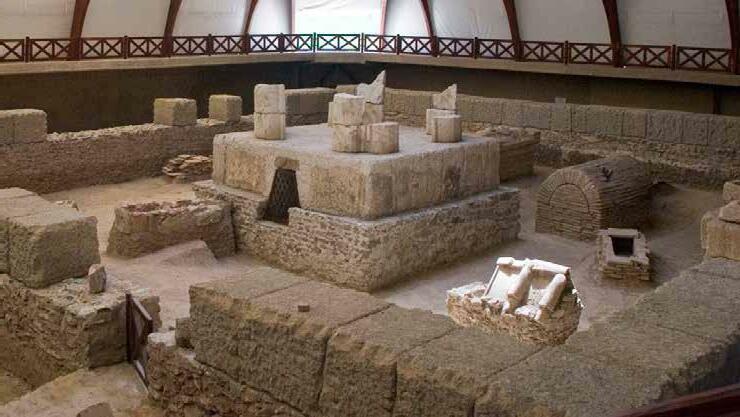
Not far away from Požarevac, city 82km fromBelgrade, there are remains of the Roman Viminacium, one of the first military camps on the river Danube, which was transformed into an important city for the duration of II century A.D. During the boom days, Viminacium was one of the major Roman cities in the Balkans. There was almost no Roman emperor who did not visit the city. It was the main military centre towards the eastern border of the empire, a trade centre, a city where money was minted and was the capital city of Upper Moesia province. The very well preserved remains of a spacious amphitheatre, pub lic baths, the aqueduct and necropolises are all the testimonies of how glorious the Roman Viminacium used to be in its heyday. The ornamentation and cookware found in tombs are in part, exhib ited at the Museum of Požarevac, and partly, at Belgrade National Museum.
Today, Viminacium is a scientific-research centre which is being turned into an archeological park and a unique tourist attraction with an authentic Roman ambience where tourists can also join the excavation teams by prior arrangement.
Fresco painting Viminacium, detail, IV century A.D.
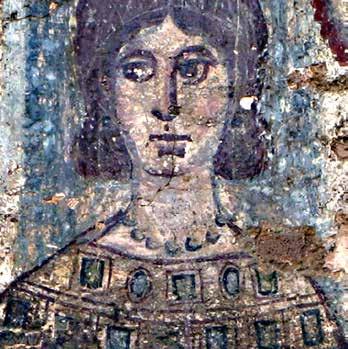
Tourism Organisation of Požarevac
Phone:+38112221941 www.togp.rs
Viminacium – a Roman city and stronghold Phone: +381 62 232 209 www.viminacium.org.rs
EMPEROR TRAJAN’S ĐERDAP FEAT
During his invasions of Dačani (between 101 and 106), Emperor Trajan performed a series of incredible architectural feats in the space of Djerdap. He built the Via Traiana road to Dacia, today’s Romania. The traces of that road are visible today, too, as well as the letters carved in stone, Tabula Traiana (Trajan’s Memo rial Plaque), telling of the cutting-through of the road straight through the rocky coast.
The emperor’s letters preserved near the fortification of Dijana which safeguarded the canal, testify about the second feat Trajan performed, namely his construction of a canal to ensure safer sail ing.
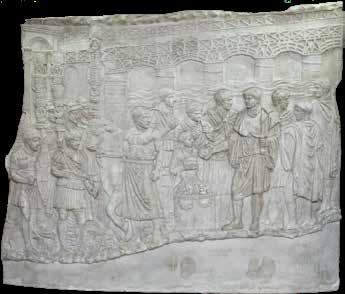
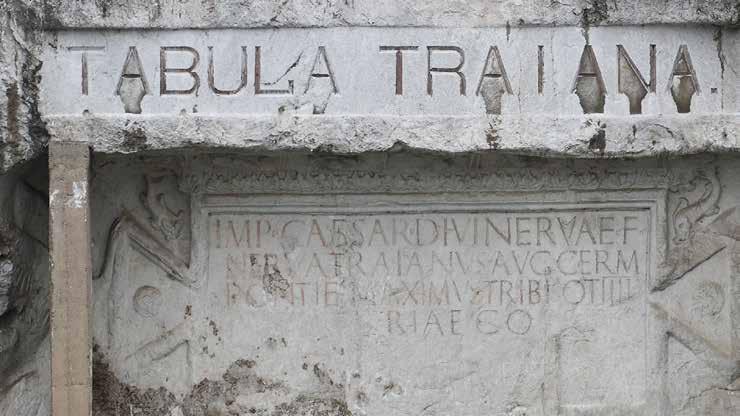
The construction of Trajan’s Bridge on the River Danube in the vi cinity of today’s Kladovo, 260km from Belgrade, was considered to be an architectural feat performed by famous Apolodor the Dama scene. Being the biggest one of that time, with 50 pillars and a length of 1 kilometer, the bridge brought glory to Emperor Trajan, and helped him to conquer the new province. Even today, the re mains of the 1900-year old pillars of Trajan’s Bridge, next to which there is the fortress of Pontes, are still visible.
EMPEROR TRAJAN’S ĐERDAP FEAT
Tourism Organisation of Kladovo Municipality
Phone: +381 19 801 690 www.tookladovo.rs
National Museum – Archeological Museum of Đerdap Phone: +381 19 803 900 www.narodnimuzej.rs
Presentation of Trajan’s bridge, Copy of Trajan’s column in Rome, detail, 113.A.D.
www.serbia.travel
Tabula Traiana, detail, I century A.D.
FELIX ROMULIANA
In Gamzigrad, not far away from Zaječar, a town 250km to the east of Belgrade, there are the ruins of Felix Romuliana emperor’s residence, which Emperor Galerius built in his native place at the beginning of the IV century. The city was belted by strong walls and a large number of towers, while, within the confines of the big walls, the emperor’s palace, a big temple and other public edifices and ancillary buildings appeared.

Romuliana is the most attractive monument of ancient times pre served in Serbia. Even today, the residence exudes imperial dig nity. The extraordinary mosaics, frescoes and valuable sculptures account for the climax of the art of that time.
The two most beautiful mosaics depicting Labyrinth and Dionysus were relocated to the National Museum in Zaječar. At the same place, sculptures are exhibited, too, including the emperor’s por trait made of porphyry.
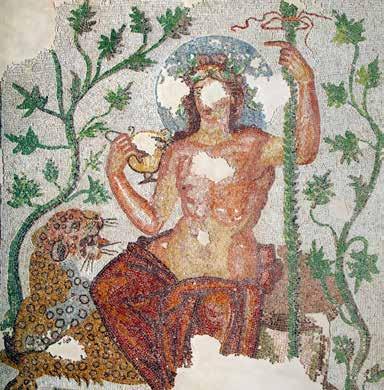
Romuliana is listed as the UNESCO world cultural heritage.
Centre for Culture and Tourism Zaječar
Phone: +381 19 421 521
National Museum Zaječar
Phone: +381 19 422 930 www.muzejzajecar.org
FELIX ROMULIANA
Felix Romuliana, IV century A.D.
God Dionysus, IV century A.D.
ANNIVERSARY OF THE EDICT OF MILAN
In Niš – the city where Constantine the Great was born – in 2013, Serbia celebrated 17 centuries of the reaching of the Edict of Mi lan (313), by which Constantine opened a new era in history. The Edict stopped the exodus of the Christians, and Christianity was allowed as a religion, which enabled it to make accelerated pro gress.
NAISUS. MEDIANA.
Emperor Constantine, coin, IV century A.D.
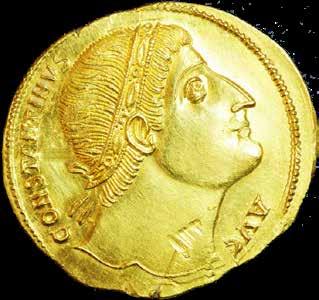
NAISUS
In Ancient Niš, the main roads leading from the Western to the Eastern Roman Empire met. Therefore, in III century, the city be came a significant trade centre, in addition to being an important producer of silver and armaments.
The times of the most imposing splendour in Naisus were those under the rule of Constantine the Great, who was born in Naisus, and, while ruling as the emperor, he would frequently visit his na tive town, making it more beautiful by building many public edi fices.
The remains of ancient Naisus lie deep under the Fortress of Niš and alongside the banks of the Nišava River.
The gravestones are exhibited inside the fortress and the bronze portrait of Emperor Constantine is kept at the National Museum in Belgrade, and ornaments including bronze statuettes, dishes, money and one bronze female head, maybe originating from a performance of Empress Theodora, are kept at the National Museum of Niš.
Medusa mosaic, Mediana, IV century A.D.

MEDIANA
In the suburbs of ancient Niš, 5 km towards Niška Banja, there are the very well preserved remains of the beautiful emperor’s resi dence built by Constantine. Inside the spacious complex of Medi ana, the emperor’s villa once dominated, surrounded by an open colonnade, summer residences, thermal baths and other numer ous edifices. In the full splendour of imperial luxury, the halls are decorated with mosaics on the floor mosaics, impressive frescoes and marble statues.
The Medusa mosaic and several sculptures have been relocated to the National Museum of Niš, and the rest can be seen on the site of Mediana.
Tourism Organisation of Niš Phone : +381 18 521 321 www.visitnis.com
National Museum of Niš Phone: +381 18 248 189, +381 513 430
www.serbia.travel
IUSTINIANA PRIMA
Not far away from Leskovac, a town 276 km to the south of Bel grade, there is a Roman city dating from the VI century A.D. Ius tiniana Prima (Empress’s City) - which Emperor Iustinian built in his homeland as the administrative and ecclesiastical centre of the province of Illyricum.
From the viewpoint of urbanism, Iustiniana Prima is a city with a clear plan, patterned after the metropolises of the late-ancient world. The remains of the acropolis, a spacious circular square, streets with portcullises (heavy iron gates), an Episcopal (Bish op’s) church and multi-storey houses act as testimony of the then imperial splendour and the Christian spirit of the city. Iustiniana Prima’s power was shortlived. The city was leveled to the ground by the Slovenes and the Avars as early as in 631 A.D.
The digging out on the site brought to surface a large number of objects which are mostly kept at the National Museum of Lesko vac, and partly, at the National Museum in Belgrade.
ULPIANA
The remains of this Roman city are located near Gračanica* 8 km from Priština. Situated where the agrarian and mining zones meet, Ulpiana quickly developed during the rule of Emperor Tra jan, after whom it was named. The archeological findings are kept at the Museum of Kosovo in Priština.
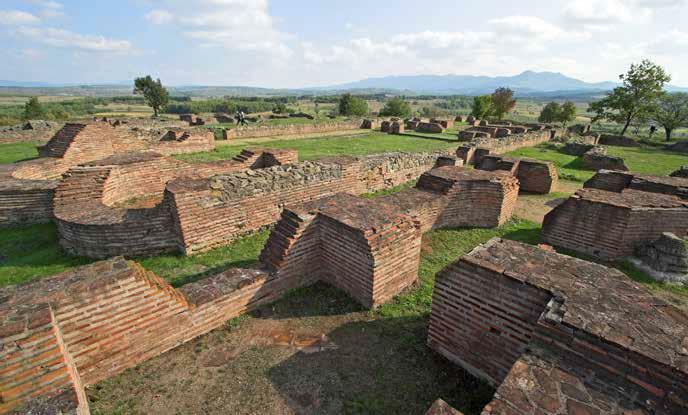
*Currently, on the basis of the UN 1244 Resolution reached by the UN Security Council, Kosovo and Metohija is under UNMIK administration.
Tourism Organisation of the Municipality of Lebane Phone: +381 16 847 160
Tourism Organisation of Gračanica
Phone: +38138748267, +38349440976
IUSTINIANA PRIMA. ULPIANA. TIMACUM MINUS.
Iustiniana Prima VI century A.D.
TIMACUM MINUS
In the vicinity of Knjaževac, there are the remains of an old Roman fort – Timacum Minus. A part of the archeological findings have been relocated to the Niš Collection of Stone Monuments and Fragments, whereas the dishes, various ornaments and bronze statues are exhibited in the Homeland Museum of Knjaževac.
Tourism Organisation of the Municipality of Knjaževac Phone: +381 19 735 230
The Homeland Museum of Knjaževac Phone: +381 19 731 407
ASSOCIATION OF TOUR OPERATORS IN SERBIA
YUTA - National association of travel agencies of Serbia www.yuta.rs/sr/receptiva/clanice-odbora-receptiva.asp
IMPRESSUM
THE ROMAN EMPIRE IN SERBIA
Publisher
National Tourism Organisation of Serbia Čika Ljubina 8, Belgrade, Serbia
Tel: +381 11 6557 100
Fax: +381 11 2626 767
E-mail: office@serbia.travel www.serbia.travel
serbiatourism serbia
For publisher: Marija Labović MSc, Acting Director
Editor: Smiljana Novičić
Text: Jasmina Milovanović
Design: Marijana Markoska
Photography: Tourism Organisation of Niš archive, Dragan Bosnić, Branko Jovanović, Svetlana Dingarac Translator: Slobodan Rakić
Language editor: Russell Stenhouse Mapping board: Merkur SV Map consultant: Olgica Miljković, PhD Print: Futura, Novi Sad
The 9th edition in English, 2022 Volume: 3,000 ISBN 978-86-6005-656-8
Cartographic no: 06 broj: 034-01-01-65/2022 - 13.04.2022
MILOVANOVIĆ, Jasmina, 1972The Cultural Treasures of Serbia / [text Jasmina Milovanović ; translator Slo bodan Rakić]. - 8th ed. in English. - Belgrade : National Tourism Organisation of Serbia, 2021 (Belgrade : Službeni glasnik). - [44] str. : fotogr. ; 24 x 20 cm
stv. nasl.: Kulturno blago Srbije. - Kor. nasl. - Podatak o autoru preuzet iz kolofona. - Tiraž 3.000. - Sadrži: Prehistory on Serbia’s Land ; The Roman Em pire in Serbia ; Monasteries of Serbia ; Fortresses in Serbia ; Galleries in Serbia ; Museum of Serbia ; Industrial heritage in Serbia / [text Jasmina Milovanović].

978-86-6005-656-8 (broš. u zaštitnom omotu)
www.serbia.travel
CIP - Каталогизација у публикацији Народна библиотека Србије, Београд 338.48(497.11)(036) 908(497.11)(036)
Izv.
ISBN
а) Србија -- Водичи COBISS.SR-ID 39145225
THE CULTURAL TREASURES of SERBIA
THE ROMAN EMPIRE IN SERBIA
www.serbia.travel
FORTRESSES IN SERBIA
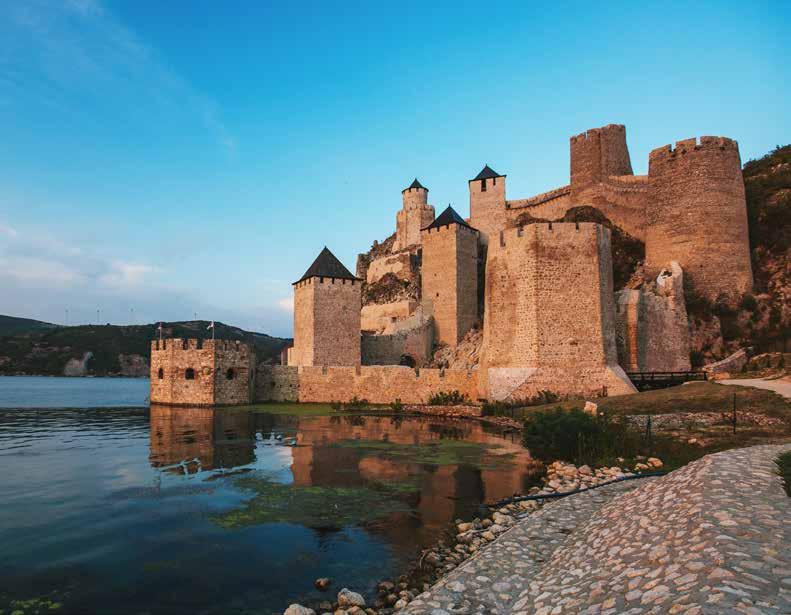
THE CULTURAL TREASURES of SERBIA
TOURISM ORGANISATION of SERBIA
www.serbia.travel
NATIONAL
MAP OF SERBIA

LEGEND
International Border Settlement Signs City County Center Riversand Lakes Highway Highway Regional Road Airport Fortress
Cover photo: Golubac fortress, XIV century
BAČ.
FORTRESSES IN SERBIA
In Serbia, there are the remains of nearly forty fortified medieval cities and fortresses. They were built at strategically important geo graphical points alongside rivers, key roads or on the defence border lines. They were raised to be impossible to conquer; however, their ruins tell the story of the invasion and the appearance and disap pearance of the cultures they once defended. New masters renewed, strengthened and adapted them to the development of the warring technique and changed their original forms.
Some fortresses were only military outposts while others protected manor-houses and their squires’ estates and some fortresses were intended for defending the monasteries. Many fortresses were the heralds of contemporary cities. Their tower and defensive-wall sys tems encompassed the whole settlements – houses, shops, public buildings and churches.
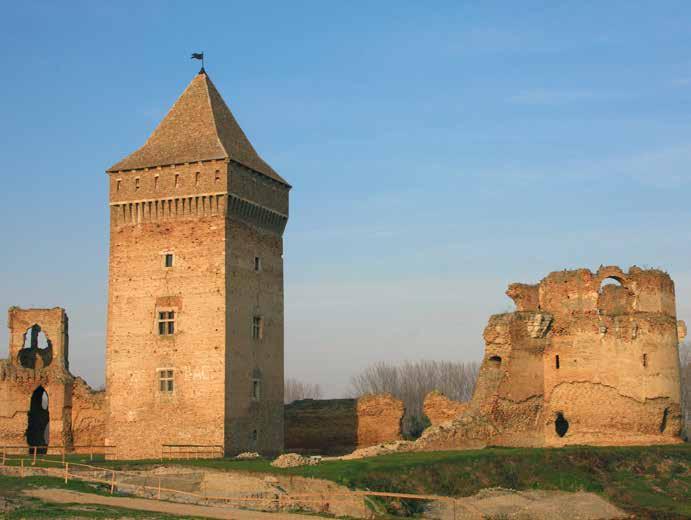
As the significant monuments of the European military architec ture, today, Serbia’s fortresses are part of the rich cultural heritage and an inevitable ‘must-see’ tourist destination in their own right.
BAČ
The fortress in Bač is the most significant and the best-preserved medieval fortress in Vojvodina. It was erected around the mid-XIV century on a small island of the Mostonga River, which has since run dry today.
Bač is a type of a “water city”, structured so as to defend the lowland marshy environment surrounding the city. On all sides, the city was surrounded by the river and approached by maneuverable bridges. The main tower in the courtyard is one of the most beauti ful examples of late-medieval donjons in this part of Europe. The city was burnt and deserted at the beginning of XVIII century. Today, the fortress is open for visitors, and hosts European Heritage Days, exhibitions and folklore concerts.
Tourism Organisation of Bač Municipality Phone: + 381 21 607 2222
www.serbia.travel
INTRODUCTION.
PETROVARADIN FORTRESS
The Petrovaradin Fortress, also known as ‘Gibralter on the Dan ube’ is located on a rocky hill opposite today’s Novi Sad city cen tre. Because of its dominant geographical position, many people, namely the Celts, the Romans, the Avars, the Byzantines, the Hungarians, the Turks, and, ultimately, the Austrians, who built the fortress we know today in XVIII century, badly wanted to con quer it for centuries.
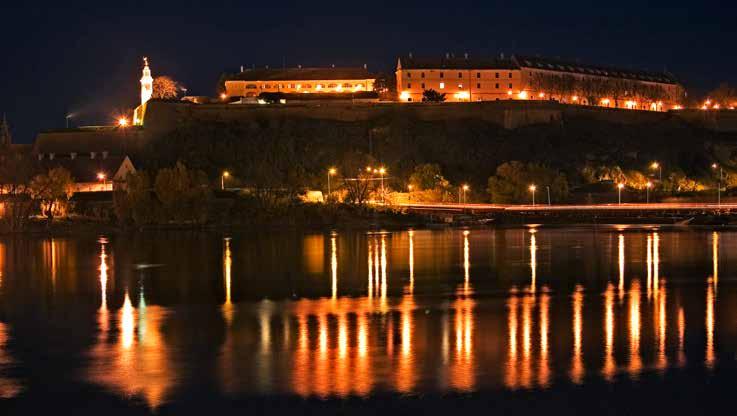
Petrovaradin is a very well-preserved and is the second largest fortress to be found in Europe. It is considered to be one of the best achievements of the European military architecture of XVIII century. Its strong and thick defending walls are made of brick and were built for the purpose of fighting with powerful fire-arms and encompass the upper and the lower garrison city coming out onto the Danube banks.
The underground of the fortress consists of a tangle of the under ground tunnels, galleries and corridors, while the army barracks once intended for the accommodation of officers and soldiers with an arsenal, a number of workshops and other buildings whose
Tourism Organisation of the City of Novi Sad Phone: +381 21 6617 343, 421 811 www.turizamns.rs

once defensive role has since been replaced with cultural and tour ist attractions, including many art galleries and are surrounded by the thick walls.
The Observatory and Historical Archive have found their place inside the fortress. The gunboat has been transformed into the Museum of the City of Novi Sad, and in one of the barracks there is a hotel, while numerous studios have since opened in the cellars. The baroque tower with a big clock on the Ludvig bastion is the fortress’s recognizable tourist attraction and affords the visitor with a magnificent view of the Danube and Novi Sad.
PETROVARADIN
FORTRESS
BELGRADE FORTRESS
Belgrade Fortress acts as the centre of what today’s Belgrade now stands upon. The fact that Belgrade is a city for which the largest number of battles ever – 115 such battles were fought - testifies to the significance of the place where it was built.

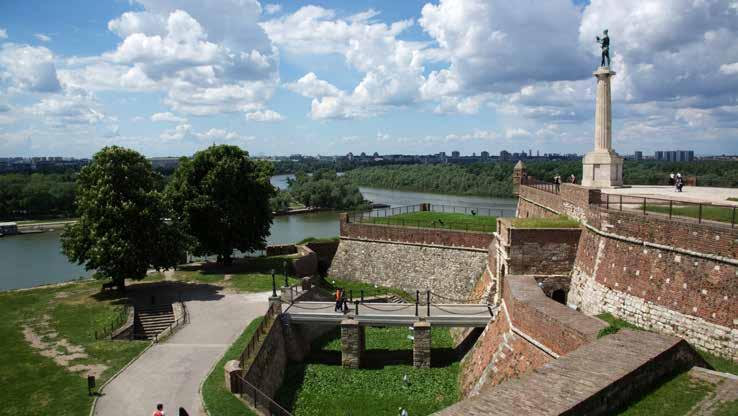
At the confluence of the river Sava with the river Danube, the an cient Celtic settlement of Singidunum was first raised, only to be followed by a significant Roman fort. Later the city was ruled by the Byzantines and the Hungarians; for a while, the city belonged to Serbian King Dragutin, and for centuries, the Turks and the Austrians fought for it. Belgrade thrived at the beginning of XV century, when it was renewed by Despot Stefan Lazarević, who transformed it into a big city hosting Serbia’s new residence. The fortress complex is divided into Upper City and Lower City. In the Upper City, the thick defensive walls repeat the founda tions of the Roman castrum, and the medieval Despot’s Gate with Dizdar’s Tower and the Zindan Gate, whose towers hid notorious Turkish prisons and are well preserved. The Lower City and the port had their fortification with towers. Nebojša Tower, built be fore XV century, protected the entrance into the medieval port.
Dating from XVIII century, the Turkish Sahat Gate was preserved and highlight the Austrian masonry – the massive defensive walls made of brick and Carlo’s Gate which is decorated in the baroque style and influence.
BELGRADE FORTRESS
Today’s fortress, surrounded by Kalemegdan Park, has been trans formed into an open-air museum and a space for many cultural events held throughout the year. In the Sentinel Building, there is the Gallery of the Natural History Museum; the Observatory is in Dizdar’s Tower, the Planetarium is in the old Turkish bath house, while concerts and theatrical plays are performed at the Powder-works.
Tourism Organisation of Belgrade Phone: +381 11 2635 622, 2635 343 www.tob.rs
Belgrade Fortress www.beogradskatvrdjava.co.rs
www.serbia.travel
SMEDEREVO FORTRESS
At the confluence of the river Jezava with the river Danube, one of the most beautiful fortresses in Europe – Smederevo – lies. The fortress was erected by Despot Đurđe Branković as a new resi dence of the state fighting to survive after being confronted with strong Turkish penetrations in XV century.
The colossal fortress, surrounded by water from all sides, seemed to be inconvincible; yet, in 1459, it was conquered by the Turks, which signified the end of the Serbian medieval state.
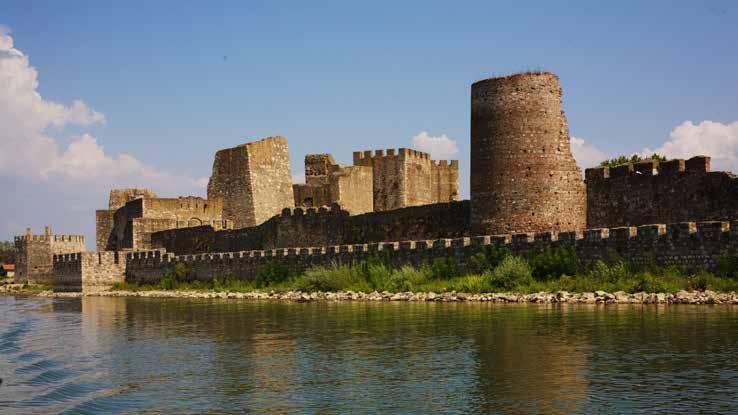
The very big triangle-shaped fortified city is belted by 25 towers, standing 20 meters high and massive walls of around 10 meters in height and up to 4 meters wide. The Small City was built first, with Despot Đurađ’s court providing a ceremonial hall for audiences and the donjon-tower serving as the last shelter for the court’s nobility. A little later, the Big City was built, where military camps were deployed and where the local population lived and was forti fied by colossal towers and surrounded by a moat.
Today, the fortress is open for visitors and represents a space for cultural and sports events of the City of Smederevo.
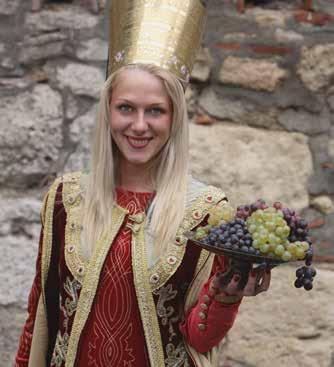
Smederevo Fortress P.C. Phone: +381 26 615 666 www.visitsmederevo.com SMEDEREVO FORTRESS
GOLUBAC
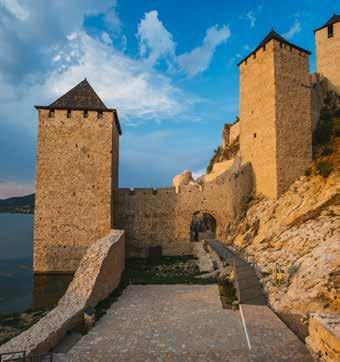
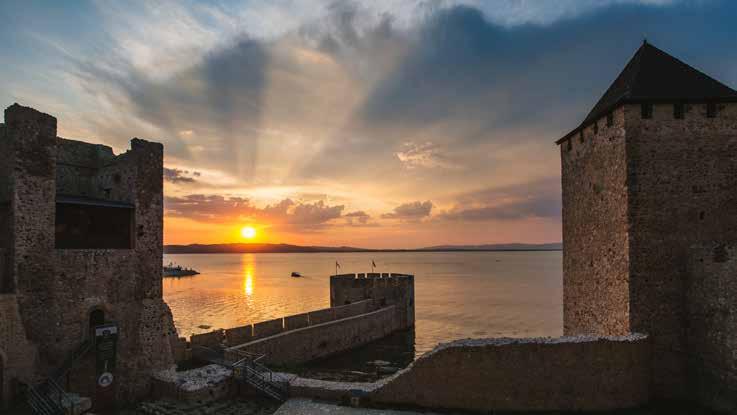
Golubac is a medieval fortress errected on a sharp ridge above the Danube River, at the entrance to the Đerdap Gorge, 4 kilometers downstream from the town of the same name. Because of its im portant strategic position, this place was fortified early on in his tory, and in the times to follow the governors of the town that changed several times.
The fortress as can be seen today was built in XIV century, and several times it was conquered by the Hungarians and the Serbs; the Turks ruled there the longest. Golubac is a real military forti fication without outskirts. Its base is of an irregular pattern and is adapted to the steep hill from which it is perched. On the top of the rock, there is the “hat tower”, from which two rows of the mas sive walls with eight impressive towers in the shape of a fan slope. It was only possible to reach the town via a water trench. The oc tagonal tower with a platform for guns was built by the Turks on the bank of the river so as to protect the port, and in order to gain control over navigation, they linked the tower to the Babakay Rock, protruding from the water, with a chain.
The town of Golubac is one of the smaller fortifications compared with Petrovaradin Fortress, Belgrade Fortress or Smederevo For tress; however, it is a “must-see” tourist destination because of its beauty and location, being the entrance to the second largest gorge to be found in the world after the Grand Canyon.
Organisation of Golubac Municipality
+381 12 638
www.serbia.travel
Tourism
Phone:
614 www.golubac.rs www.tvrdjavagolubackigrad.rs GOLUBAC
MAGLIČ
On the top of the steep cliffs in Ibar Gorge, on the way from Kraljevo to Ušće, there is a medieval town – Maglič. Many legends are associated with Maglič; however, it is not known for sure when the town was built; nor is it known who its first master was. The town is supposed to have been built in XIII century to protect the roads of Old Raška and the monasteries of Studenica and Žiča.
It has been recorded that, in XIV century, Archbishop Danilo II erected new palaces and cells in the town. Maglič is one of the best-preserved and the most beautiful fortifi cations of the medieval Serbia period. The formation of the town follows the form of the ridge it was built on. It is belted by strong defensive walls with seven towers and a tall donjon on the eastern side. The interior of the fortress hides the preserved foundations of St. George’s Church (Crkva sv. Đorđa), the remains of a palace, a bakery and a water cistern. Even today it is not easy to access the hardly ever conquerable town of Maglič. There is a plan for the future arrangement of the fortress complex as well as to make pedestrian paths which will make Maglič a more accessible place for visitors.

Tourism Organisation of Kraljevo Phone: +381 36 316 000, 311 192
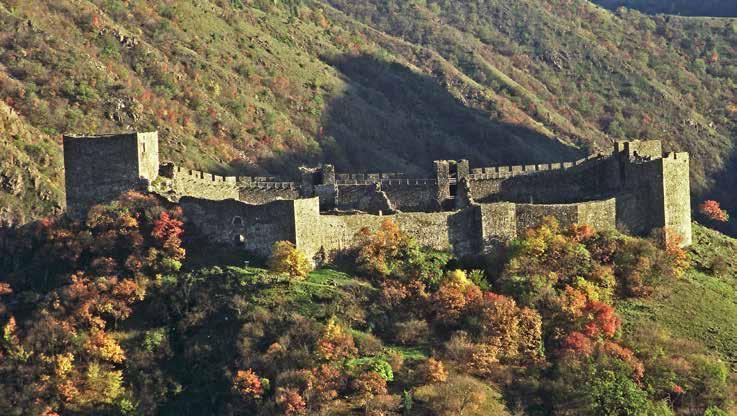
MAGLIČ
NIŠ FORTRESS
Niš Fortress, situated in the center of the city on the Nišava River bank, represents one of the best-preserved and one of the most beautiful Turkish military forts in the Middle Balkans. It was built in XVII century, on the site where earlier a Roman, then a Byzan tine and finally a Serbian medieval city had stood once. The fortress of a heptagonal five-bastion shaped basis is belted by massive defensive walls. Once, the fortress was surrounded by a trench filled-up with water (moat), whose northern part is kept today, too. The main entrance is through the southern Stambol Gate, and on the other sides – through the Belgrade, Vidin and Wa ter Gates. The hamam is the oldest preserved building dating from the Turkish times – a Turkish bathhouse from XV century. Inside the fortress, there was Pasha’s court and the Garrison Headquar ters, a library, a settlement with barracks, shops, powder-works and other military buildings.
Within the complex of the fortress today, there are numerous cultural and tourist contents. The Arsenal and Bali-Bey’s Mosque have been transformed into exhibition galleries, whereas the sum mer stage represents an important cultural centre of the city in cluding the internationally acclaimed Nišville Jazz festival.
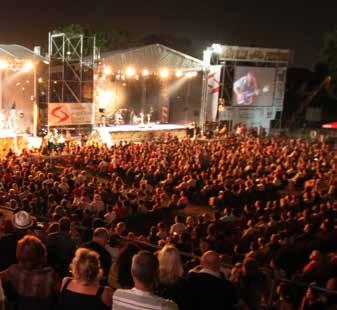
NIŠ FORTRESS

Tourism Organisation of Niš Phone: +381 18 521 321, 524 877 www.visitnis.com www.serbia.travel
KALE – THE TOWN INSIDE PIROT TOWN
Inside the town centre of contemporary Pirot, lies the Kale For tress, known amongst many people as Momčilo’s Town. Accord ing to the tradition, the town was built by the famous Rhodope aristocrat Momčilo, but most probably, the fortress was built by Prince Lazar in XIV century, on the site of an older Roman fort, as a strategic point in defending the town from the Turkish invasion. This region was on the main trade and military route through which the Istanbul road passed.
The town of Pirot represents a smaller-sized military fort strengthened by the towers and consists of two compounds. The Upper Town was raised on a high rock behind the Bistrica River, just slightly far away from its confluence with the Nišava River. On the very top of the rock, a tall donjon tower with a view of the broad Pirot field was errected. The Lower Town was belted by a brick-made trench and strong defensive walls with towers.
Today, the fortress is open for visitors; however, the town of Pirot is making a big effort to reinvent itself with a programme of fun damental reconstruction. By opening new spaces for museums and exhibitions and by building the replicas of old Pirot houses, the fortress is becoming the cultural centre of the town.

Tourism Organisation of Pirot Municipality Phone: +381 10 320 838, 320 839 www.topirot.com
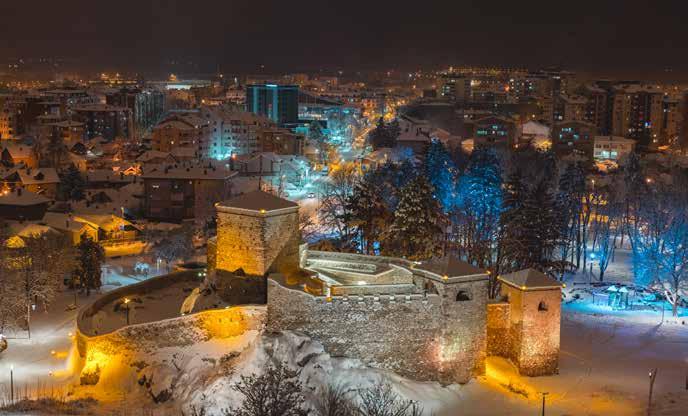 KALE – THE TOWN INSIDE PIROT TOWN
KALE – THE TOWN INSIDE PIROT TOWN
FORTRESSES IN SERBIA
Publisher
National Tourism Organisation of Serbia Čika Ljubina 8, Belgrade, Serbia Tel: +381 11 6557 100 Fax: +381 11 2626 767 E-mail: office@serbia.travel www.serbia.travel
serbiatourism serbia
For publisher: Marija Labović MSc, Acting Director Editor: Smiljana Novičić Text: Jasmina Milovanović Design: Marijana Markoska Photography: Branko Jovanović, Dragan Bosnić, Vladimir Tatarević, Dragan Vildović, Đorđe Bošković, Marina Perović, Nišville Festival archive, Igor Đorđević, Luka Šarac Translator: Slobodan Rakić Language editor: Russell Stenhouse Mapping board: Merkur SV Map consultant: Olgica Miljković, PhD Print: Futura, Novi Sad The 9th edition in English, 2022 Volume: 3,000 ISBN 978-86-6005-656-8 Cartographic no: 06 broj: 034-01-01-65/2022 - 13.04.2022
Bač Fortress, XIV century www.serbia.travel
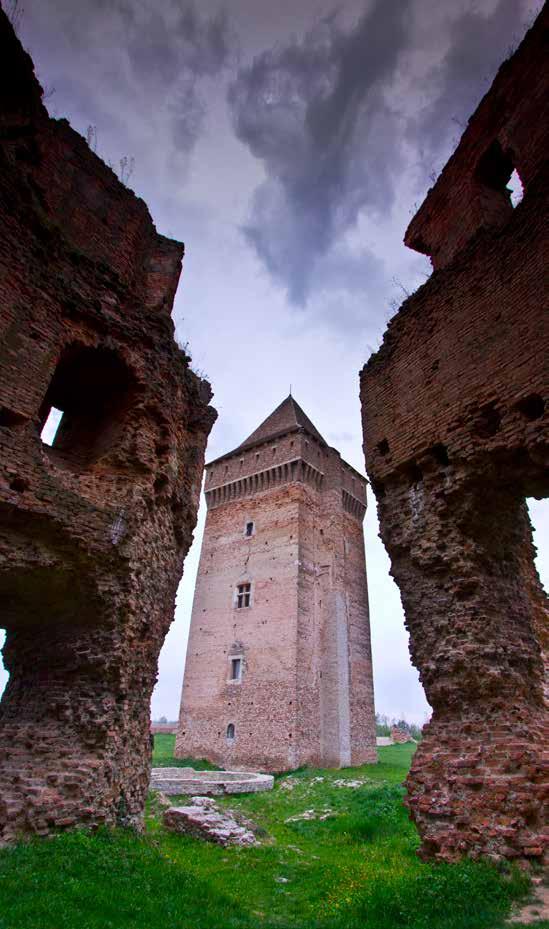
IMPRESSUM
ASSOCIATION OF TOUR OPERATORS IN SERBIA YUTA - National association of travel agencies of Serbia www.yuta.rs/sr/receptiva/clanice-odbora-receptiva.asp CIP - Каталогизација у публикацији Народна библиотека Србије, Београд 338.48(497.11)(036) 908(497.11)(036) MILOVANOVIĆ, Jasmina, 1972The Cultural Treasures of Serbia / [text Jasmina Milovanović ; translator Slo bodan Rakić]. - 8th ed. in English. - Belgrade : National Tourism Organisation of Serbia, 2021 (Belgrade : Službeni glasnik). - [44] str. : fotogr. ; 24 x 20 cm Izv. stv. nasl.: Kulturno blago Srbije. - Kor. nasl. - Podatak o autoru preuzet iz kolofona. - Tiraž 3.000. - Sadrži: Prehistory on Serbia’s Land ; The Roman Em pire in Serbia ; Monasteries of Serbia ; Fortresses in Serbia ; Galleries in Serbia ; Museum of Serbia ; Industrial heritage in Serbia / [text Jasmina Milovanović]. ISBN 978-86-6005-656-8 (broš. u zaštitnom omotu) а) Србија -- Водичи COBISS.SR-ID 39145225
THE CULTURAL TREASURES of SERBIA
FORTRESSES IN SERBIA
www.serbia.travel
GALLERIES IN SERBIA
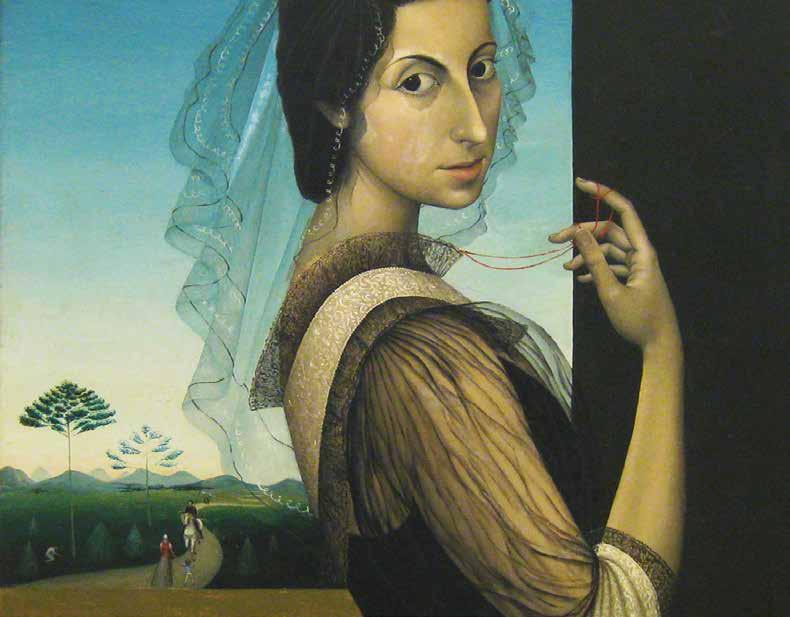
THE CULTURAL TREASURES of SERBIA
NATIONAL TOURISM ORGANISATION of SERBIA
www.serbia.travel
MAP OF SERBIA
Cover photo: Milena Pavlović Barili, Self-portrait with veil, 1939.
LEGEND
International Border Settlement Signs City County Center
Rivers and Lakes Highway Highway Regional Road Airport Gallery

GALLERIES IN SERBIA
There are few cities associated with one particular name; there are not many famous and known people who can be identified with one particular place as such. We hereby present the art galleries leav ing their mark on the cultural identity of the cities where they are located in and affirming their environment through their activities, too, simultaneously representing an interesting resource of Serbia.
MILAN KONJOVIĆ GALLERY, SOMBOR
“Milan Konjović” Gallery in Sombor was opened in 1966, with a collection of 500 selected works representing the art of Milan Konjović, which the grand artist gave as a gift to his native town. Milan Konjović (1898-1993) was a renowned Serbian painter who lived in Paris and painted in his own style of a passionate colour ist. Today, the gallery has a big collection of paintings representing an overview of the whole creative career of the famous painter and numerous retrospective exhibitions in the country and abroad. The “Milan Konjović” Gallery is extremely significant in the culture of Sombor and is a ‘must-see’ for those visiting the town.

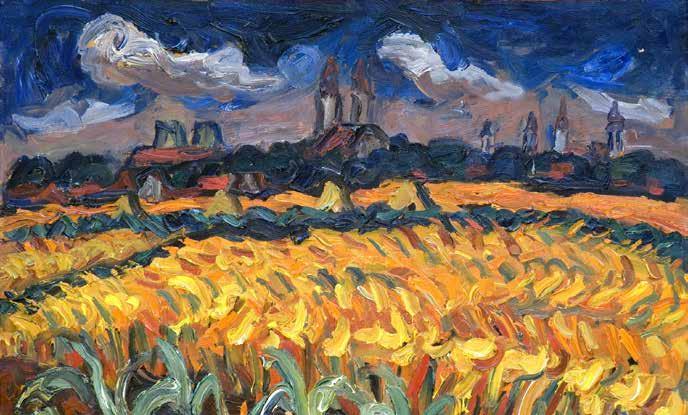
“I give these paintings, my favourite ones, to my native town as a gift, and do it with love, for it is there that they do belong to…”
Milan Konjović
Tourism Organisation of Sombor Phone: +381 25 434 350 www.visitsombor.org
“Milan Konjović” Gallery Phone: +381 25 412 563 www.konjovic.rs
www.serbia.travel
INTRODUCTION. SOMBOR.
Milan Konjović, Ripe Wheat, 1938.
Milan Konjović, Houses in Cavtat, 1936.
THE MEMORIAL COLLECTION OF PAVLE BELJANSKI, NOVI SAD
The memorial collection of Pavle Beljanski keeps anthological works of Serbian modern art in the first half of XX century, the gift of the famous collector who it was named after. Simultane ously with a permanent exhibition of works, visitors can also see the Memorial of an Artist and the Memorial of Pavle Beljanski. Throughout the year, the gallery hosts thematic exhibitions, stu dents’ and children’s workshops, concerts and promotions. Since the gallery opened to the public, the Memorial Collection of Pavle Beljanski was a place where admirers of art, researchers, collectors, artists, people belonging to different traditions and in terests have been meeting. The very collection of Pavle Beljanski has been self-sufficient to attract attention of all of those people and, on the basis of the works, deserve to be acclaimed as the most complete and the most significant collection of Serbian modern art.
Tourism Organisation of the City of Novi Sad
Phone: +381 21 6617 343, 421 811 www.turizamns.rs
Memorial Collection of Pavle Beljanski
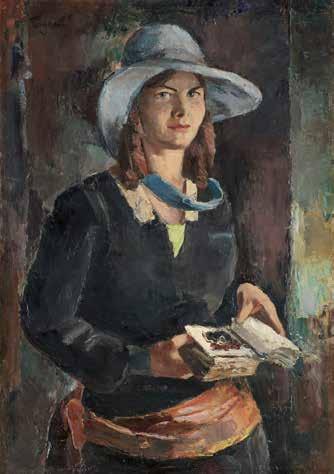
Phone: +381 21 472 99 66, 528 185
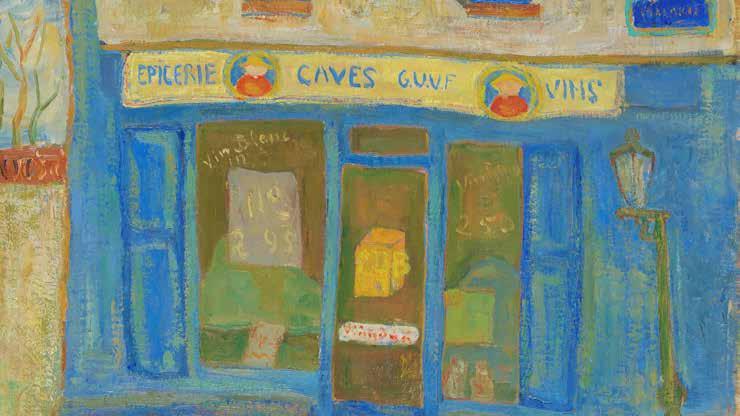 NOVI SAD
Jovan Bijelić, Girl with a book, 1929.
Petar Lubarda, Blue shop window, detail, 1930.
NOVI SAD
Jovan Bijelić, Girl with a book, 1929.
Petar Lubarda, Blue shop window, detail, 1930.
Sava Šumanović, Ajša, detail, 1929.
SAVA ŠUMANOVIĆ PAINTINGS GALLERY, ŠID
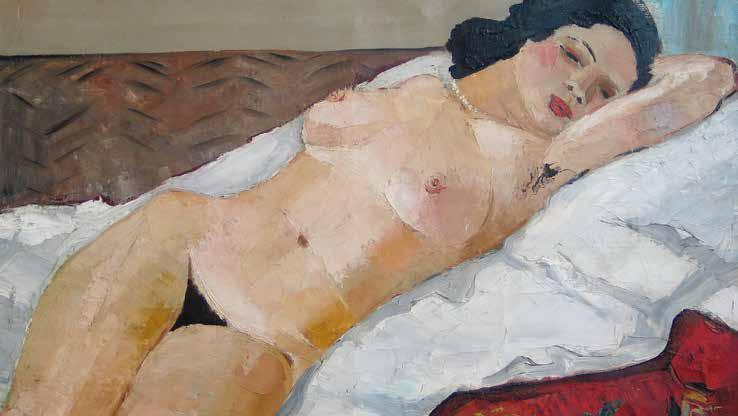
The legacy of a famous painter, who spent his last twelve years of life in Šid, is kept in the Šumanović’s family house in this town. In his homeland, Sava Šumanović (1896-1942) found serenity and inspiration, and it is here that he produced his most beautiful works of art.
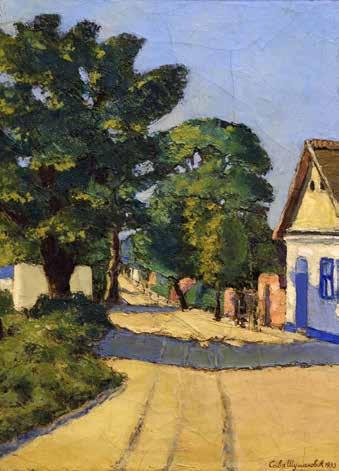
Today, the gallery named after him has an invaluable collection of 417 works of art. Visitors to the gallery are given an opportunity to learn in detail about the last decade of the creative endeavors of this great Serbian painter, as well as to gain s short insight into the period of time when the artist lived and worked in Paris.
In the immediate vicinity of the gallery, there is the memorial home of Sava Šumanović, where the artist’s studio, his family’s pieces of furniture and the authentic ambience are preserved.
Tourism Organisation of Šid Phone: +381 22 710 610 www.tourismsid.rs
“Sava Šumanović” Paintings Gallery
Phone: +381 22 716
www.savasumanovic.com
www.serbia.travel
825
ŠID
Sava Šumanović, Tree-lined village street, detail, 1933.
KOVAČICA. POŽAREVAC.
GALLERY OF NAIVE ART IN KOVAČICA
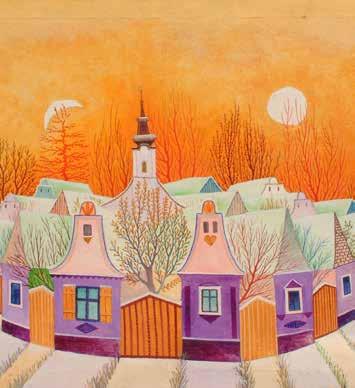
For more than half a century, naive painters in Kovačica have been attracting global attention. The Gallery of Naive Art has put in one place displaying the best works of art of these painter-farmers, and those admiring naive art have been presented with a complete picture of their poetic visual arts creative endeavour. Ever since the day it was established, the Gallery has given the world 37 dis tinguished painters of naive art.
The most significant painters of naive art of the Gallery are Zuza na Halupova and Martin Jonaš. In its homeland fund, the Gallery of Naive Art keeps paintings of both the first naive art painters and the contemporary members of the Gallery.
The magical world of naive art painters immersed into today’s popular folklore is visited by nearly 17,000 tourists from the country and overseas every year.
MILENA PAVLOVIĆ-BARILI GALLERY, POŽAREVAC
The Gallery of Milena Pavlović-Barili in Požarevac is actually the house where she was born which has been converted into a gallery, offering visitors a chance to see her paintings and at the same time get to know more about this extraordinary woman, female painter and poetess of surrealism.
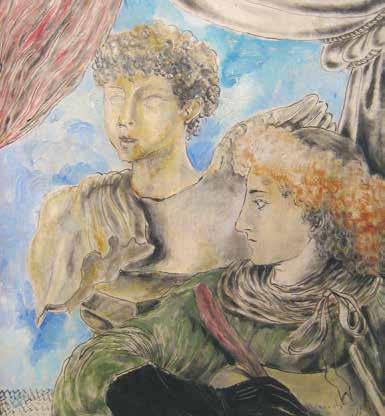
Milena Pavlović-Barili (1909-1945) is one of the most interesting people of the artistic Europe between the two wars. She lived in Rome, Paris and London, where she exhibited together with the European elite, such as Jean Cocteau and Andre Breton. While liv ing in New York, Milena Pavlović-Barili was also an illustrator for Vogue and other fashion magazines.
The Gallery has the permanent exhibition of Milena’s works of art, as well as a memorial room with authentic pieces of furniture and her family members’ photographs.
Tourism Organisation of Kovačica Municipality
Phone: +381 13 660 460 www.took.org.rs
The Gallery of Naive Art in Kovačica
Phone: +381 13 661 157
Tourism Organisation of Požarevac
Phone: + 381 12 544 155
www.turistickaorganizacijagradapozarevca.rs
Milena Pavlović-Barili Gallery
Phone: +381 12 524 173
Milena Bavlović Barili, Portrait with a black glove, 1935.
Martin Jonaš, My Kovačica, 1969.
THE FRESCOES GALLERY, BELGRADE
The Frescoes Gallery of the National Museum in Belgrade gives visitors an opportunity to have an experience of and gain an in sight into the greatest achievements of the Serbian medieval and Byzantine arts at one central point. The Gallery keeps the replicas of the frescoes, icons, miniatures and castings of sculptures which bear testimony to the unique and significant art of medieval Serbia and the neighbouring Balkan countries; many replicas originate from monuments destroyed or are endangered today.
For its rich collection and unique concept of the exhibition space, the Frescoes Gallery is a ‘must-see’ on the Belgrade Tourist Map.

Tourism Organisation of Belgrade
Phone: +381 11 2635 622, 2635 343 www.tob.rs
The Frescoes Gallery

Phone: +381 11 2621 491 www.narodnimuzej.rs

www.serbia.travel BELGRADE
The Frescoes Gallery, Belgrade
Studenica monastery frescoes, XIII century
LOZNICA. VALJEVO.
MIĆA POPOVIĆ GALLERY, LOZNICA
In one of the most beautiful houses in Loznica’s main street, there is the Mića Popović Gallery, the gallery of a renowned painter and an honorary citizen of Loznica.
Mića Popović gave his native town a collection of his paintings, graphic paintings and drawings, as well as books on painting he had been writing as a gift. Sometime later, the collection was com pleted by the works of art of the painter’s wife – Vera BožičkovićPopović.
Mića Popović (1923-1996), an academic, painter and director, who left a mark on his time through his rebellious energy and pieces of work which are listed as the best accomplishments of our XXcentury art.
THE VALJEVO MODERN GALLERY, VALJEVO
The Valjevo Modern Gallery is one of the leading galleries in Serbia exhibiting significant works of art of contemporary visual arts. The permanent exhibition of the Gallery presents the works of art of eminent painter academic Ljuba Popović, born in Valjevo, who lives and works in Paris.
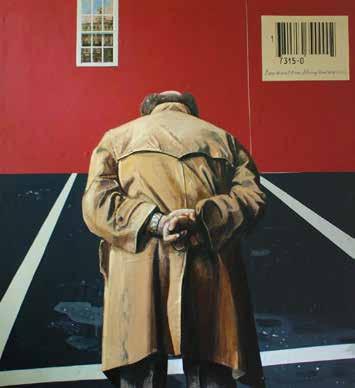
The Gallery’s thematic exhibitions present the works of art of the painters of Mediala, a significant Serbian avant-guard movement in the second half of XX century, and contemporary painters of the Fantasists’ movement as the successor of Mediala.
Apart from exhibitions, Valjevo Modern Gallery also organises lectures, forums, movies and serious music concerts.
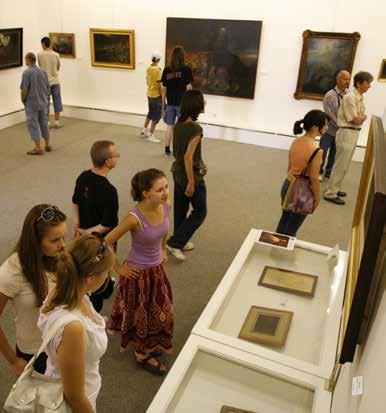
Tourism Organisation of the Town of Loznica
Phone: +381 15 878 520 www.togl.rs
Mića Popović Gallery
Phone: + 381 15 881 151
Public Company “Valjevo Tourist”
Phone: +381 14 221 138, 236 393
Valjevo Modern Gallery
Phone: +381 14 220 878
MićaPopović, I fell…, 1981. The Valjevo Modern Gallery
TOWN GALLERY, UŽICE
The Town Gallery in Užice is an exhibition space and an impor tant centre of the contemporary art of the region of the town. The Gallery organises exhibitions of modern and contemporary artists from the country and abroad as well as a very significant interna tional event – The International Graphics Biennale ‘Dry Needle’. The Gallery’s premises are also open for the regional visual arts sa lon, numerous educational programmes and artistic projects such as ‘Graffiti Night’ and ‘The Wall Mosaic’.
UŽICE. NIŠ.
Tourism Organisation of Užice
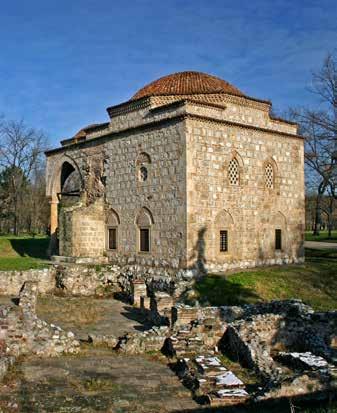
Phone: +381 31 514 761 www.turizamuzica.org.rs
Town Gallery Užice Phone: +381 31 512 505 www.galerijauzice.org
THE CONTEMPORARY ART GALLERY, NIŠ
The Contemporary Visual Arts Gallery leaves a special mark on the cultural life of the City of Niš and represents an important cen tre for the contemporary art of South-Eastern Serbia. The Gallery has three very attractive exhibition spaces: Paviljon (The Pavilion), within the walls of a former Turkish arsenal; Salon 77 (Salon 77), inside Bali Bey’s Mosque in the Fortress, and Galerija Srbija (Gal lery Serbia), in the very city-center of Niš. By its wide range of activities – numerous exhibitions, lectures, documentary and research work – the gallery affirms its environ ment and takes contemporary art closer to its citizens and visitors alike. The Contemporary Visual Arts Gallery of Niš also organises two international events: the Art Colony of Sićevac and the Inter national Graphics Workshop.
Tourism Organisation of Niš Phone: +381 18 524 877, 521 321 www.visitnis.com
Contemporary Art Gallery
Phone: +381 18 512 640, 513 701 www.gslunis.org

www.serbia.travel
Exhibit Area - Gallery Salon 77
Town Gallery, Užice
ČAČAK. WE ALSO RECOMMEND.
Nadežda Petrović, The Sea, detail, 1910.
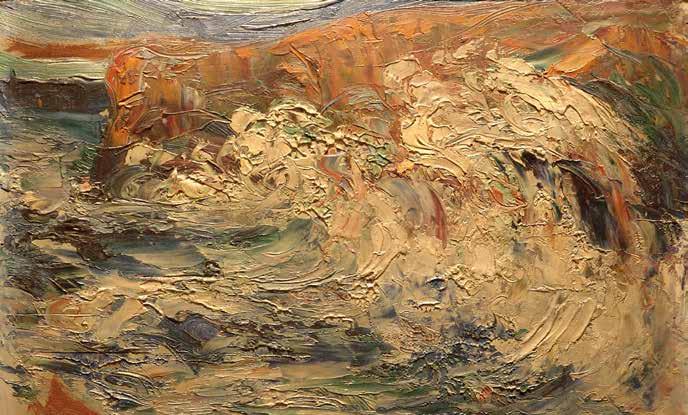
THE NADEŽDA PETROVIĆ ART GALLERY, ČAČAK
The Nadežda Petrović Art Gallery in Čačak is engaged in contem porary visual arts through its exhibition and publishing activities as well as other kinds of artistic programmes. It was named af ter Nadežda Petrović (1873-1915), a great female painter and the originator of Serbian modern art who was also born in this town. Apart from numerous exhibitions of contemporary artists, the gallery organises the Memorial of Nadežda Petrović every second year which is the oldest and one of the most significant interna tional visual arts events held in the country. It encapsulates and cherishes the tradition of the first Yugoslav exhibitions Nadežda Petrović initiated, organised and presented her works of art at. There are four extraordinary and valuable contemporary art col lections at the gallery.
Tourism Organisation of Čačak
Phone: +381 32 342 360 www.turizamcacak.org.rs
Nadežda Petrović Art Gallery
Phone: +381 32 322 375 www.nadezdapetrovic.rs
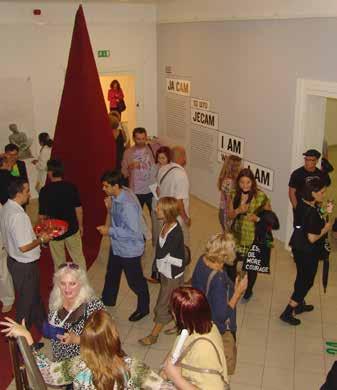 Memorial of Nadežda Petrović, Contemporary Art Event
Memorial of Nadežda Petrović, Contemporary Art Event
There are numerous events both national and international which represent contemporary visual arts in Serbia. Just to mention some of them:
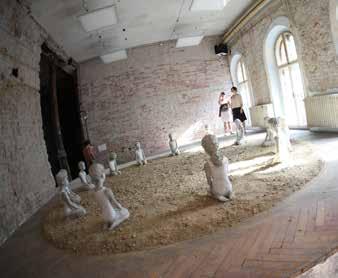
1. Architecture Biennial – Belgrade www.mpu.rs
2. BELEF - Belgrade www.belef.rs
3. Biennial Art in Pančevo www.kulturnicentarpanceva.rs
4. International Comics Festival – Belgrade www.salonstripaskc.rs
5. International Terracotta Sculpture Symposium - Kikinda www.terra.rs
6. Marble and Sounds – Aranđelovac www.mermerizvuci.rs
7. October Salon, Belgrade www.oktobarskisalon.org
8. Miniature Biennial - Gornji Milanovac www.bijenaleminijature.org.rs
9. Triennial of Ceramics - Subotica / Belgrade www.mpu.rs
IMPRESSUM
ASSOCIATION
OPERATORS
GALLERIES IN SERBIA
Publisher
National Tourism Organisation of Serbia Čika Ljubina 8, Belgrade, Serbia Tel: +381 11 6557 100 Fax: +381 11 2626 767
E-mail: office@serbia.travel www.serbia.travel
serbiatourism serbia
For publisher: Marija Labović MSc, Acting Director
Editor: Smiljana Novičić
Text: Jasmina Milovanović
Design: Marijana Markoska Photography: Violeta Marković, Biljana Radičević, Sava Šumanović Paintings Gallery - Šid, Town Gallery - Užice, Dušan Jovanović, Vladimir Popović, Andrija Beker, Jan Špringelj, Daniel Mikić, Dragan Bosnić, Branko Jovanović
Translator: Slobodan Rakić
Language editor: Russell Stenhouse
Mapping board: Merkur SV Map consultant: Olgica Miljković PhD Print: Futura, Novi Sad
The 9th edition in English, 2022 Volume: 3,000 ISBN 978-86-6005-656-8
Cartographic no: 06 broj: 034-01-01-65/2022- 16.04.2022
MILOVANOVIĆ, Jasmina, 1972-
Cultural Treasures of Serbia /
Jasmina Milovanović ; translator Slo bodan Rakić]. - 8th ed. in English. - Belgrade : National Tourism Organisation of Serbia, 2021 (Belgrade : Službeni glasnik). - [44] str. : fotogr. ; 24 x 20 cm
stv.
Kulturno blago Srbije. - Kor. nasl. - Podatak o autoru preuzet iz kolofona. - Tiraž 3.000. - Sadrži: Prehistory on Serbia’s Land ; The Roman Em pire in Serbia ; Monasteries of Serbia ; Fortresses in Serbia ; Galleries in Serbia
Museum of Serbia ; Industrial heritage in Serbia / [text Jasmina Milovanović].
978-86-6005-656-8 (broš.
zaštitnom omotu)
www.serbia.travel
October Salon, Belgrade
OF TOUR
IN SERBIA YUTA - National association of travel agencies of Serbia www.yuta.rs/sr/receptiva/clanice-odbora-receptiva.asp CIP - Каталогизација у публикацији Народна библиотека Србије, Београд 338.48(497.11)(036) 908(497.11)(036)
The
[text
Izv.
nasl.:
;
ISBN
u
а) Србија -- Водичи COBISS.SR-ID 39145225
THE
GALLERIES IN SERBIA
of
CULTURAL TREASURES
SERBIA www.serbia.travel
MUSEUMS OF SERBIA
THE CULTURAL TREASURES of SERBIA
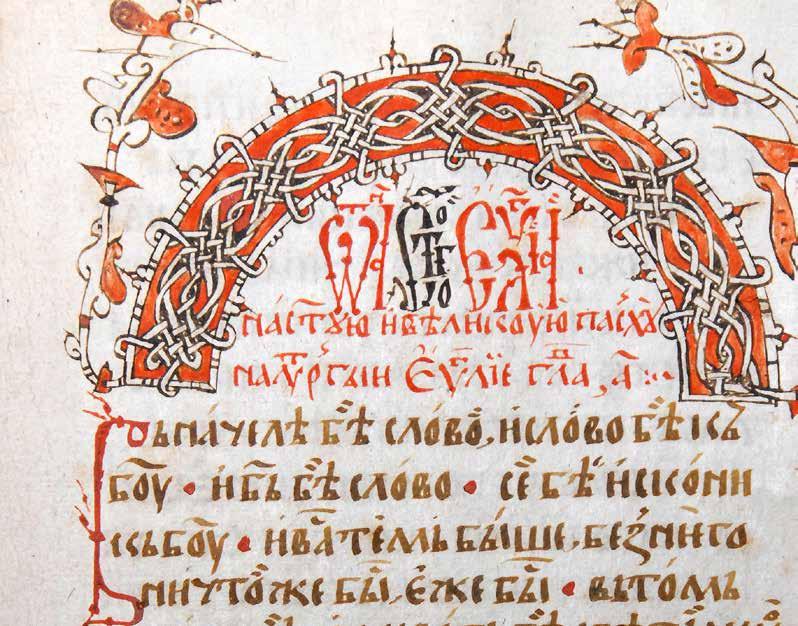
NATIONAL TOURISM ORGANISATION of SERBIA
www.serbia.travel
MAP OF SERBIA

LEGEND
International Border Settlement Signs City County Center Rivers and Lakes Highway Highway Regional Road Airport Museum
Cover
Photo: National Museum Čačak, Gospel of Čačak,
1554.
INTRODUCTION
MUSEUMS OF SERBIA
Museums are immensely important for preserving and pro tecting cultural heritage, as well as promoting cultural diver sity in Serbia. By means of current exhibitions, new museum displays, interesting publications, research and educational programmes, museums communicate with the public in an innovative way, piquing their curiosity, advancing their knowledge and significantly affecting the course of culture and art in Serbia.
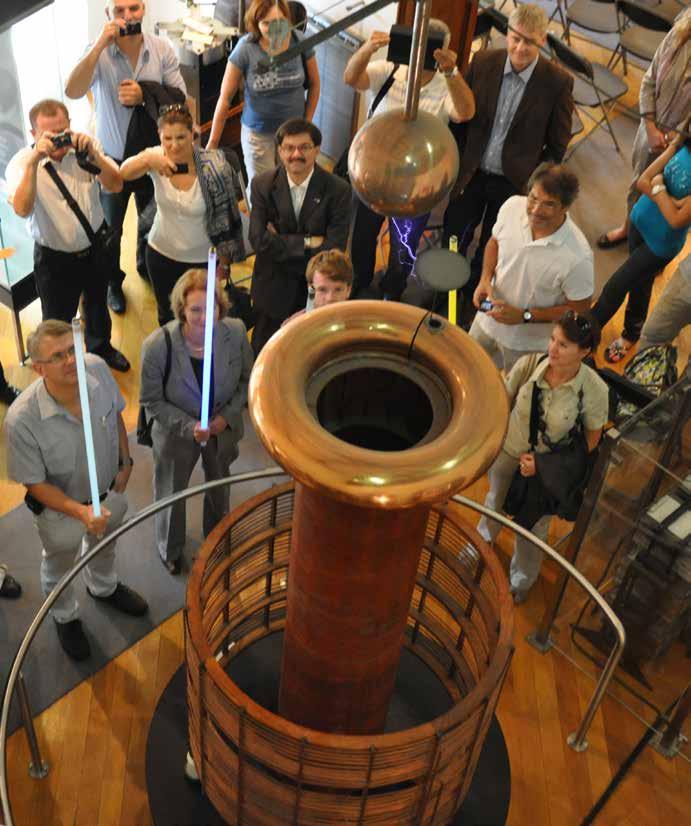
www.serbia.travel
Nikola Tesla Museum
MUSEUMS OF SERBIA
NATIONAL MUSEUM, BELGRADE
The National Museum is Serbia’s oldest and most important mu seum – it is a true symbol of Serbian culture. This is home to a valuable collection of objects and superb works of art including prehistoric sculptures from Lepenski Vir and Vinča, mediaeval icons and the renowned Cyrillic manuscript The Miroslav Gos pel. There is also an impressive collection of contemporary Euro pean and world art.
www.narodnimuzej.rs
HISTORICAL MUSEUM OF SERBIA, BELGRADE
The Historical Museum of Serbia takes visitors on a journey through the country’s political, social and cultural history. Mediaeval flags and sigils, old maps, rare photographs, royal crowns and the insignia of Serbian ruling dynasties are only a part of the museum’s many displays bringing to life Serbia’s rich heritage. www.imus.org.rs
MUSEUM OF CONTEMPORARY ART, BELGRADE

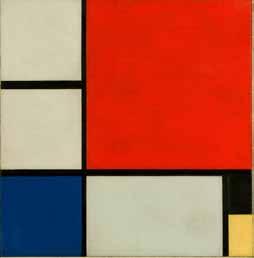
The Museum of Contemporary Art is a place of creativity and in spiration with an experimental approach to art. Extraordinary exhibitions and the most comprehensive collection of modern and contemporary art from the former Yugoslavia give it an im portant role in the artistic and cultural life of Belgrade and Serbia. www.msub.org.rs
ETHNOGRAPHIC MUSEUM, BELGRADE

The Ethnographic Museum researches and preserves traditional culture and customs of the ethnic groups that live within Serbia and in the wider regions of the Balkans. There is a rich and var ied range of displays illustrating authentic folk art, handicrafts and architecture. www.etnografskimuzej.rs
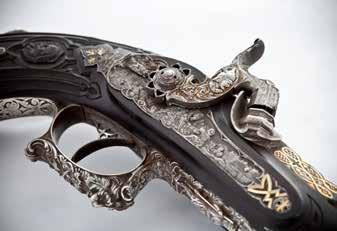 National Museum Belgrade, Piet Mondrian, The Composition II 1929.
Museum of Contemporary Art
Ethnographic Museum in Belgrade, rug from Pirot, 1st half of 20th century
Historical Museum of Serbia, The Gun of Stevan Knićanin, detail, 19th century
National Museum Belgrade, Piet Mondrian, The Composition II 1929.
Museum of Contemporary Art
Ethnographic Museum in Belgrade, rug from Pirot, 1st half of 20th century
Historical Museum of Serbia, The Gun of Stevan Knićanin, detail, 19th century
MUSEUM OF APPLIED ART, BELGRADE
The Museum of Applied Art focuses on design and the applied arts, with valuable collections of furniture, costume, jewellery, ceramics, tapestries, embroidery and carpets from ancient to modern times on display. Especially significant are the collec tions of photographs, Yugoslav illustrations, graphic design, graphic novels, and posters. www.mpu.rs
Museum of Applied Art, Dinner service, part, Czech Republic, 1890–1900.
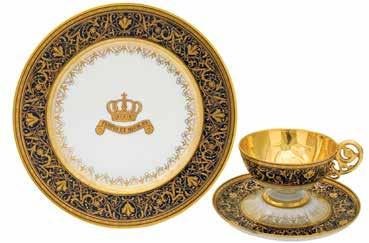
MUSEUMS OF SERBIA
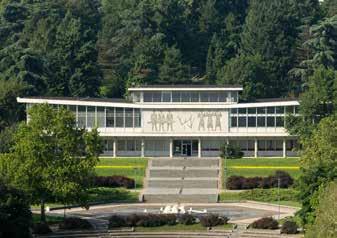
NATURAL HISTORY MUSEUM, BELGRADE
The Natural History Museum is a unique museum in Serbia be cause it conducts research, protects and presents natural herit age. It is one of the leading natural history museums in south east Europe due to the range and variety of its specimens. It boasts a rich collection of minerals, fossils and animal species, as well as a valuable herbarium of the Balkan Peninsula.
*The Natural History Museum does not have a permanent display; exhibitions, presentations, and expert meetings take place at the Kalemegdan Gallery. www.nhmbeo.rs
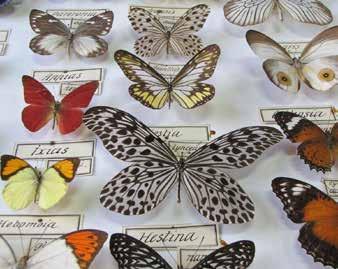
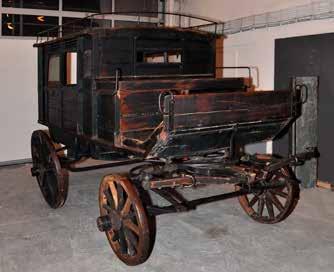
MUSEUM OF SCIENCE AND TECHNOLOGY, BELGRADE
The Museum of Science and Technology promotes learning through discovery, interactively introducing visitors to the world of science. Visitors have the opportunity to experience and understand scientific phenomena, to discover revolutionary inventions and to understand how medicine developed through the centuries in Serbia. There is also The Children’s Museum. www.muzejnt.rs
MUSEUM OF YUGOSLAVIA, BELGRADE
The former residence of Yugoslav president Josip Broz Tito, this museum complex preserves the heritage of Yugoslavia. Tito was buried in the House of Flowers whilst an imposing collection of his state gifts is kept at The Old Museum. Thematic exhibitions are organised at May 25 Museum. www.muzej-jugoslavije.org
Natural History Museum, collection of exotic butterflies
Museum of Science and Technology, Surgeon-carriage „Мundy“, end of 19th century
Museum of Yugoslav History, Museum 25th of May
www.serbia.travel
MUSEUMS OF SERBIA
MUSEUM OF THEATRICAL ARTS OF SERBIA, BELGRADE
The Museum researches and illustrates the development of thea tre in Serbia from the 13th century until today. It displays objects which are valuable for exploring the dramatic arts, opera and ballet, as well as newer forms of dramatic multimedia. Serbian theatre is explored through sketches, costumes, audio and video clips, playbills and photographs. www.mpus.org.rs
MUSEUM OF NAIVE AND MARGINAL ART, JAGODINA

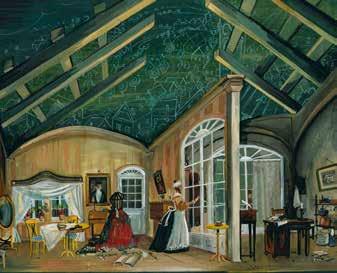
The Museum of Naïve and Marginal Art in Jagodina is the only such museum in Serbia and has one of the most impressive col lections of naive art in the world. The exceptional creative energy of self-taught painters shaped the autonomous world of naive art which is spontaneous and without rules, with lively colours and folk motifs. www.naiveart.rs
OLD VILLAGE OPEN-AIR MUSEUM, SIROGOJNO
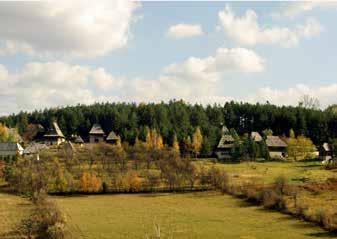
Traditional village buildings and the rural way of life are illus trated in this unique outdoor Serbian museum. It consists of au thentic objects transferred from nearby villages in Zlatibor, fix tures and fittings that make a complete village ambience. There are numerous events and exhibitions held throughout the year. www.sirogojno.rs
MUSEUM OF VOJVODINA, NOVI SAD
The Museum of Vojvodina has a comprehensive display illustrat ing the development of human society over 8,000 years on the soil of modern day Vojvodina. The museum is particularly proud of its three gilded helmets from Late Antiquity, unique exam ples recognised as the museum’s centre pieces. www.muzejvojvodine.org.rs
Museum of Vojvodina, Late Antiquity gilded helmet from, 4th century
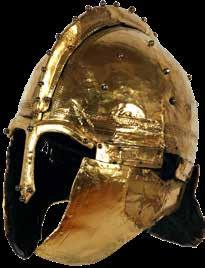 Museum of Theatrical Arts of Serbia, The scenery for the play „Kirjanja“
Museum of Naive and Marginal Art Jagodina,Emerik Feješ, Old Belgrade around 1960
Old Village Open-Air Museum Sirogojno
Museum of Theatrical Arts of Serbia, The scenery for the play „Kirjanja“
Museum of Naive and Marginal Art Jagodina,Emerik Feješ, Old Belgrade around 1960
Old Village Open-Air Museum Sirogojno
NATIONAL MUSEUM IN ČAČAK
The National Museum in Čačak is a regional institution display ing items illustrating prehistory heritage to modern times. By means of a permanent display in the picturesque building of a 19th century inn, the museum offers up treasures from the mon asteries in the Ovčar and Kablar mountains, taking visitors on a journey through Čačak’s turbulent past, with special attention to the 19th century rebellions. www.cacakmuzej.org.rs
MUSEUMS OF SERBIA
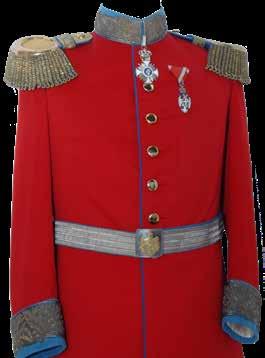
NATIONAL MUSEUM IN VALJEVO
The award-winning National Museum in Valjevo is dedicated to education using an innovative approach, with attractive presen tations and reconstructions. In addition to the multimedia ex hibition The Third Dimension, the museum also provides access to Muselim’s Palace, Nenadović Tower, and the old school build ings in Brankovina. www.museum.org.rs
NATIONAL MUSEUM IN TOPLICA, PROKUPLJE
Notable items of Prokuplje and southern Serbia are kept in the town’s National Museum. Here visitors can discover about the Toplica region’s history its distant past, its rebellion, and expe rience village ambience and town life of old Prokuplje. www.muzejtoplice.org.rs
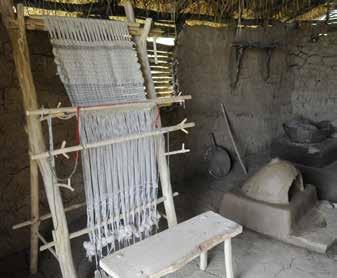
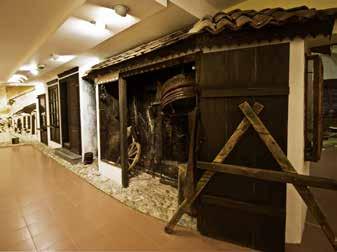
RAS MUSEUM, NOVI PAZAR
The exhibits of Ras Museum bear witness to various cultural in fluences over successive centuries in the area of Novi Pazar, from prehistoric, Roman, early Byzantine and mediaeval localities. The museum is also noted for its rich collection of oriental dress decorated with golden embroidery, old books and cutlasses. www.muzejnp.rs
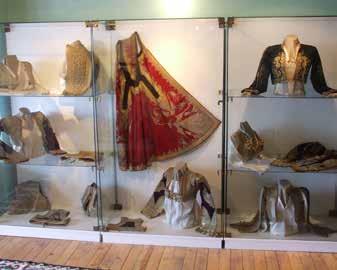 National Museum Valjevo, Replica of old districts Tešnjar
„Ras“ Museum, permanent exibition
National Museum Toplica, House of a weaver, 7.000 BC
National Museum Čačak, Festive mundir of Duke Petar Bojović, 20th century
National Museum Valjevo, Replica of old districts Tešnjar
„Ras“ Museum, permanent exibition
National Museum Toplica, House of a weaver, 7.000 BC
National Museum Čačak, Festive mundir of Duke Petar Bojović, 20th century
www.serbia.travel
NATIONAL MUSEUM IN KRALJEVO
The National Museum in Kraljevo is the regional custodian of the area’s cultural heritage offering interesting displays relat ing to archaeology, ethnology, history and art. www.nmkv.rs
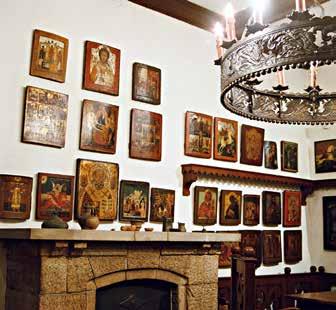
NIKOLA TESLA MUSEUM, BELGRADE
Nikola Tesla Museum is entirely dedicated to the genius scien tist, engineer, and inventor who gave humanity inventions that permanently changed our world. Dive into Tesla’s world of alter nating current, X-rays, radio, remote control systems and wire less communication, and discover the visionary solutions that formed the basis of the Second Industrial Revolution changing the course of history. www.nikolateslamuseum.org
MUSEUM OF YUGOSLAV FILM ARCHIVE, BELGRADE
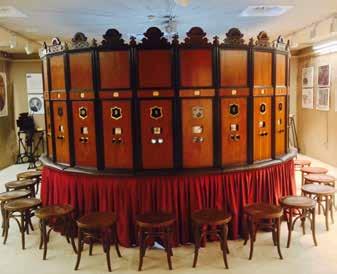
The Museum of Yugoslav Film Archive is an institution of special significance with classic films shown in the cinema hall. The Museum’s film archive is one of the most significant and richest film collections in Europe. For example, the archive has films from the very beginnings of this art form. The collection of old films contains the most worthy works from the history of film. www.kinoteka.org.rs
BELGRADE CITY MUSEUM
The immense treasure trove of Belgrade City Museum bears tes timony to the city’s turbulent 7,000 year history. A wealth of all collections allows the museum to create comparative and transtemporal images of this region.
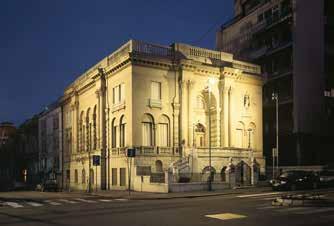
*The new building is currently undergoing renovation, so the museum’s exhibi tions take place at memorial, local, and cultural historical exhibition spaces at places spread all over the city. www.mgb.org.rs
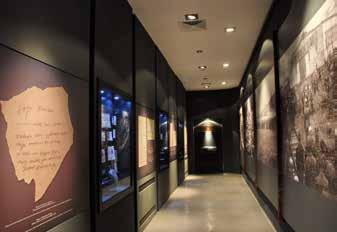 MUSEUMS
MUSEUMS
OF SERBIA
National Museum Kraljevo, permanent exhibition
Museum of Yugoslav Film Archive, Imperial panorama, end of 19th century
Belgrade City Museum, Icon Collection Sekulić
Nikola Tesla Museum
MUSEUM OF THE SERBIAN ORTHODOX CHURCH, BELGRADE
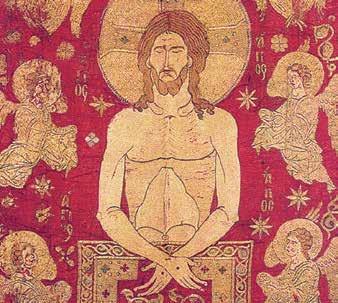
The Patriarchate Building houses the entire history of the Ser bian Orthodox Church with religious and artistic objects of im mense value including church drawings and portraits, old man uscripts and printed books, habits, carvings, and unique objects such as King Milutin’s shroud and Encomium to Prince Lazar by the nun Jefimija.
MUSEUMS OF SERBIA
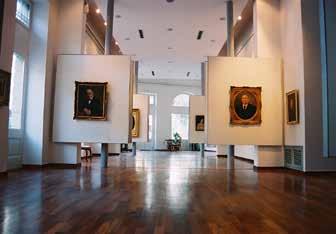
TOWN MUSEUM OF SOMBOR
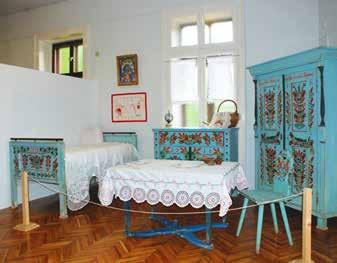
The Town Museum of Sombor is a regional museum of western Bačka, which preserves archaeological, ethnological, and his torical treasure, as well as notable collections of visual and ap plied art. Roman bronze helmets, a large collection of old coins, old flags, and Artistic Autumn display of contemporary art are only a part of what this exceptional museum has to offer. www.gms.rs
NATIONAL MUSEUM IN ZRENJANIN
The National Museum in Zrenjanin offers up the rich heritage of central Banat covering natural history, archaeology, ethnology, art and history. There are collections of birds, weapons, gold smiths’ hats (made of gold threads), prehistoric and mediaeval jewellery, valuable paintings from the 18th and 19th centuries, and the legacy of painter Uroš Predić. www.muzejzrenjanin.org.rs
NATIONAL MUSEUM IN KIKINDA
The National Museum in Kikinda has several interesting exhib its, the most notable of which is, the mammoth Kika from Ki kinda, one of the best preserved specimens in Europe. www.muzejkikinda.com
 Museum of the Serbian Orthodox Church, Christ’s shroud of king Milutin end of 13th – beginnig of 14th century, detail
National Museum Zrenjanin, permanent exibition
Town Museum of Sombor, permanent exibition
National Museum Kikinda, permanent exibition
Museum of the Serbian Orthodox Church, Christ’s shroud of king Milutin end of 13th – beginnig of 14th century, detail
National Museum Zrenjanin, permanent exibition
Town Museum of Sombor, permanent exibition
National Museum Kikinda, permanent exibition
www.serbia.travel
MUSEUMS OF SERBIA
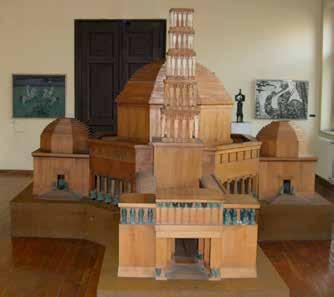
TOWN MUSEUM OF VRŠAC
The Town Museum of Vršac is one of the oldest museums in Vo jvodina. Attractive collections are kept in the old town building of Concordia and the annex Pharmacy on the Stairs. Visitors can discover everything about the Vršac Idol and Dupljaja carriage, explore the Bernatsky herbarium, and visit an interesting dis play in honour of local painter Paja Jovanović. www.muzejvrsac.org.rs
SERBIAN MUSEUM OF BREAD – JEREMIJA, PEĆINCI
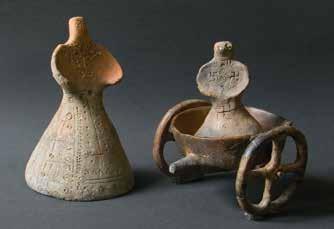
The bread museum in Pećinci was founded by painter Slobodan “Jeremija” Jeremić, who was moved by the thought that bread has spiritual and cultural significance for all people on the planet. The creative display – which represents the journey from the ground, through bread to heaven – shows tools for soil till age and wheat processing, ovens for baking bread, and various forms of ritual bread. www.muzejhleba.rs

When touring Serbia, we recommend that you also visit: Military Museum in Belgrade www.muzej.mod.gov.rs
National Museum in Zaječar www.muzejzajecar.org
Novi Sad City Museum www.museumns.rs Museum of Contemporary Art of Vojvodina in Novi Sad www.msuv.org
National Museum in Niš www.narodnimuzejnis.rs Museum in Prijepolje www.muzejuprijepolju.org.rs
Town Museum of Subotica www.gradskimuzej.subotica.rs
Local museum – Castle of culture, Vrnjačka Banja www.vrnjackabanja.co.rs
Local Museum of Knjaževac www.muzejknjazevac.rs Museum of Socks in Timok, Knjaževac www.muzejknjazevac.rs/carape_lat.html
NATIONAL MUSEUM IN KRUŠEVAC
The National Museum in Kruševac is located within the walls of Lazar’s mediaeval town. Among the Museum’s prized items are objects, clothes and jewellery from the 15th and 16th centuries. This includes the original musical notation for the composition March on the Drina by Stanislav Binički, which famously com memorates the Serbian army’s victories in World War One.
National Museum in Požarevac www.muzejpozarevac.rs Museum in Smederovo www.mus.org.rs National Museum Šabac Tel: + 381 15 3242 45
Town Museum of Vršac, Idol and trolleys, Middle Bronze Age
National Museum Kruševac: Model of the Vidovdan temple, Ivan Meštrović, 1912.
Serbian Museum of Bread – Jeremija: detail of the exibition
ASSOCIATION OF TOUR OPERATORS IN SERBIA
YUTA - National association of travel agencies of Serbia www.yuta.rs/sr/receptiva/clanice-odbora-receptiva.asp
MUSEUMS OF SERBIA
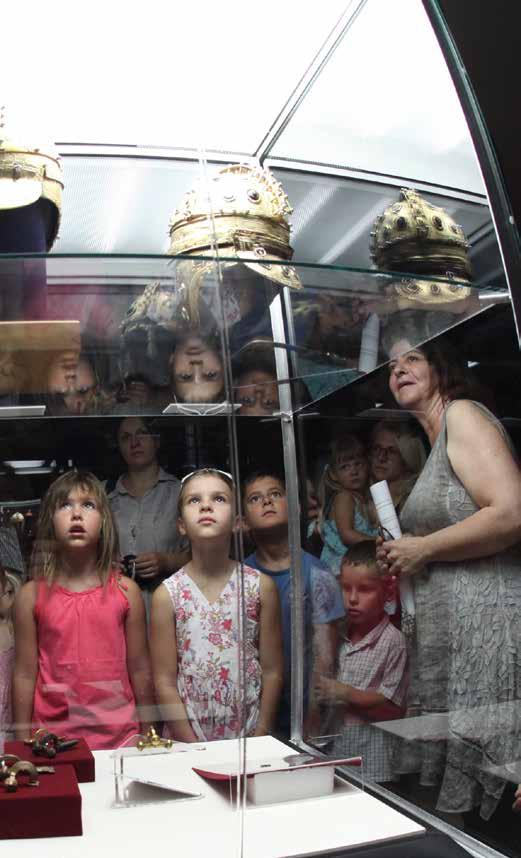
Publisher
National Tourism Organisation of Serbia 8 Čika Ljubina Street, Belgrade, Serbia
Phone: +381 11 6557 100
Fax: +381 11 2626 767 e-mail: office@serbia.travel www.serbia.travel
serbiatourism serbia
For publisher: Marija Labović MSc, Acting Director
Editor: Smiljana Novičić
Text: Jasmina Milovanović
Design: Marijana Markoska, PhD
Photography: National Museum Belgrade, Historical Museum of Serbia, Museum of Contemporary Art Belgrade, Ethnographic Mu seum in Belgrade, Museum of Applied Art, Natural History Museum, Museum of Science and Technology, Museum of Yugoslav History, Museum of Theatrical Arts of Serbia, Old Village Open-Air Museum Sirogojno, Museum of Naive and Marginal Art Jagodina, Museum of Vojvodina, National Museum Čačak, National Museum Valjevo, National Museum Toplica, „Ras“ Museum, National Museum in Kraljevo, Belgrade City Museum, Nikola Tesla Museum, Museum of Yugoslav Film Archive, Museum of the Serbian Orthodox Church, Na tional Museum Zrenjanin, Town Museum of Sombor, National Mu seum Kikinda, Town Museum of Vršac, National Museum Kruševac, Serbian Museum of Bread – Jeremija
Translator: Alkemist Translation Company
Language editor: Jovanka Ristich, Independent Public Relations Mapping board: Merkur SV Map consultant: Olgica Miljković, PhD Print: Futura, Novi Sad The 9th edition in English, 2022 Volume: 3,000 ISBN 978-86-6005-656-8 Cartographic no: 06 broj: 034-01-01-65/2022 - 13.04.2022.
MILOVANOVIĆ,
IMPRESSUM
www.serbia.travel
CIP - Каталогизација у публикацији Народна библиотека Србије, Београд 338.48(497.11)(036) 908(497.11)(036)
Jasmina, 1972The Cultural Treasures of Serbia / [text Jasmina Milovanović ; translator Slo bodan Rakić]. - 8th ed. in English. - Belgrade : National Tourism Organisation of Serbia, 2021 (Belgrade : Službeni glasnik). - [44] str. : fotogr. ; 24 x 20 cm Izv. stv. nasl.: Kulturno blago Srbije. - Kor. nasl. - Podatak o autoru preuzet iz kolofona. - Tiraž 3.000. - Sadrži: Prehistory on Serbia’s Land ; The Roman Em pire in Serbia ; Monasteries of Serbia ; Fortresses in Serbia ; Galleries in Serbia ; Museum of Serbia ; Industrial heritage in Serbia / [text Jasmina Milovanović]. ISBN 978-86-6005-656-8 (broš. u zaštitnom omotu) а) Србија -- Водичи COBISS.SR-ID 39145225
THE CULTURAL TREASURES OF SERBIA
MUSEUMS OF SERBIA
www.serbia.travel
INDUSTRIAL HERITAGE IN SERBIA
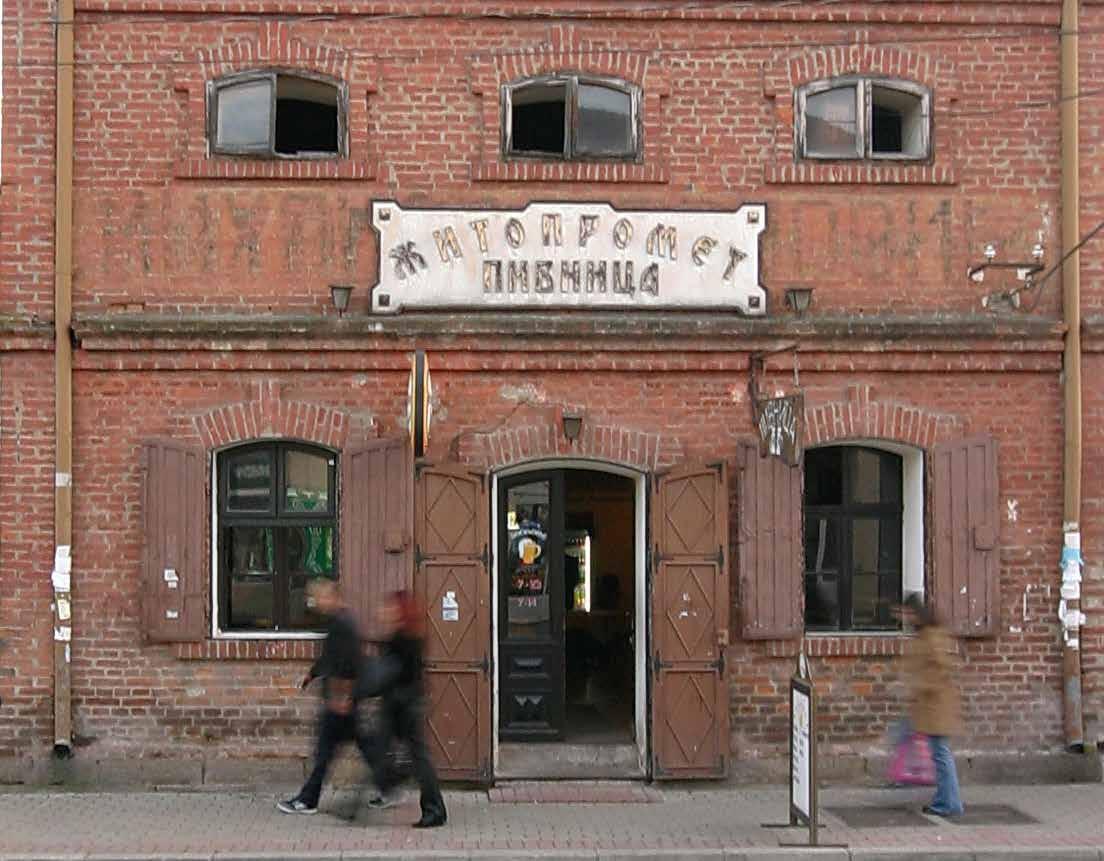
THE CULTURAL TREASURES of SERBIA
NATIONAL TOURISM ORGANISATION of SERBIA
www.serbia.travel
MAP OF SERBIA
LEGEND
International Border Settlement Signs City County Center
Rivers and Lakes Highway Highway Regional Road Airport
Industrial Heritage
 Cover photo:
Cover photo:
Valjevo Brewery
INDUSTRIAL HERITAGE IN SERBIA

Discover the treasure of Serbia’s industrial heritage! Old fac tories, mines, machines and workers’ colonies used to be generators of industrial development and symbols of pro gress, but now they represent outstanding heritage and are an impressive testament to the time of the rapid modernisa tion of Serbia. Following the traces of industrial heritage you will enter a world of 19th- and 20th-century science and tech nology, learn interesting titbits about electrification, peer into centuries-old interiors of workshops and discover living museums of industrialisation.
Serbia’s industrial heritage has preserved the achievements of European cultural heritage and evidence of the culture di versity of this region. Much attention has been paid recently to its revival. Abandoned factories and outdated technologies have not been symbols of decay for some time now, but places of life and assembly, new spaces of culture and real tourist attractions.
As part of European Heritage Days, an event that is tradition ally marked in more than 50 European countries, the year 2015 has been declared the year of industrial and technical heritage.
www.serbia.travel INTRODUCTION
Lock in Bečej
ASTRONOMICAL OBSERVATORY BELGRADE
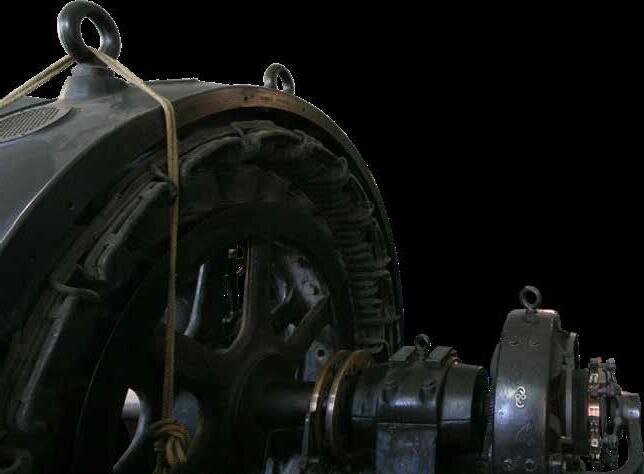
One of the most significant institutions in Serbia since 1887, the Belgrade Observatory actively engages in astronomical research and contributes immeasurably to the experimental development of the natural sciences. The popular Observatory (Zvezdarnica as it is known locally), housed in an extraordinary modernist building from the 20th century, will reveal to you the museum’s display of an old astronomical instruments, the most important astronomical library in Serbia, and the large refractor – the big gest telescope in Balkans.
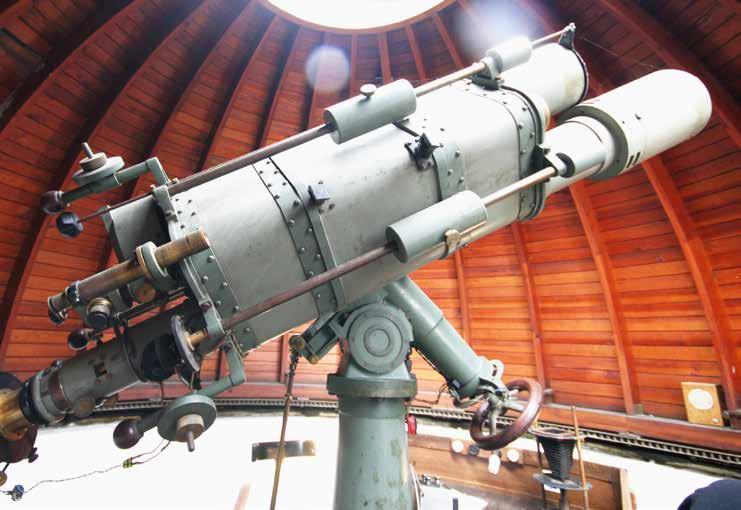
INDUSTRIAL HERITAGE IN SERBIA Tel: +381 11 3089 089, 64 48 42 123 Е-mail: vesna@aob.rs sninkovic@aob.rs www.aob.rs www.tob.rs As part of European Heritage Days, an event that is traditionally marked in more than 50 European countries, the year 2015 has been declared the year of industrial and technical heritage.
Astronomical Observatory Belgrade
POSTAL-TELEGRAPHIC-TELEPHONIC MUSEUM, BELGRADE
At the PTT Museum you will walk through history of the Serbian post, telegraph and telephone service. Peer into the treasury of postal riches and you will discover wonderful items, such as in duction phones, a Morse telegraph station, a 19th-century post carriage and a substantial collection of postage stamps.
www.pttmuzej.rs www.tob.rs
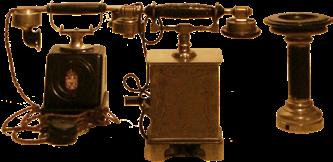
AERONAUTICAL MUSEUM, BELGRADE
Almost a century of the development of the aviation industry in Serbia is presented in this specialised museum at Belgrade Nikola Tesla Airport. A valuable and diverse collection of original aircraft, radars and aircraft engines are located in the museum’s exhibition halls.
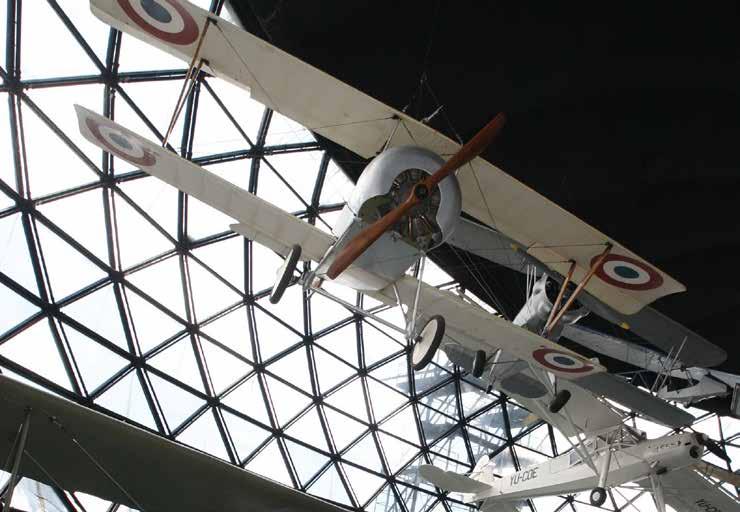
A special attraction for visitors is the exhibition of war aircraft, which includes: a FIAT G-50, the only preserved example of the Italian fighter aircraft in the world, an Oluj 11, the first armed aircraft used in the Serbian army during the breach of the Mac edonian Front, and the most famous fighters in the Second World War – the German Messerschmitt ME 109 and the Brit ish Spitfire, as well as the famous “invisible” American bomber Nighthawk F-117 and the unmanned aircraft of the 1999 NATO bombing of Serbia.
www.muzejvazduhoplovstva.org.rs www.tob.rs
INDUSTRIAL HERITAGE IN SERBIA
Aeronautical Museum, Belgrade
Postal-Telegraphic-Telephonic Museum, Belgrade
www.serbia.travel
OLD POWER PLANTS


The old power plants are a sort of witness to the past of the elec tric power industry, to the great ideas and endeavours of a time that was dedicated to electrification. The oldest plants – the Le potica na Moravici (‘the Beauty on the Moravica river‘) near Ivan jica, the Vila na Nišavi (‘the Fairy on the Nišava river‘) near Niš and the Svetlo sa Crnog Timok (‘the Light from the Black Timok‘) in Gamzigrad – were built a bit less than one hundred years ago and have continued to work to this day without interrup tion. The Pod Gradom (‘Under the Castle‘) power plant in Užice was built thanks to Serbian scientists Nikola Tesla and Đorđe Stanojević long ago in 1900, only four years after Tesla’s Niagara Falls hydroelectric power plant.
www.nmuzice.org.rs www.turizamuzica.org.rs www.visitnis.com www.teslaways.rs
 INDUSTRIAL HERITAGE IN SERBIA
INDUSTRIAL HERITAGE IN SERBIA
The Tesla and Stanojević Route is a route of culture that connects all places significant to these two great scientists and ten old hydroelectric power plants in Serbia. In 2016, the 160 years anniversary of the birth of Nikola Tesla will be celebrated.
Power plant “Sićevo”, Niš
Power plant “Under the Castle”, Užice
IRON GATE HYDROELECTRIC POWER PLANT
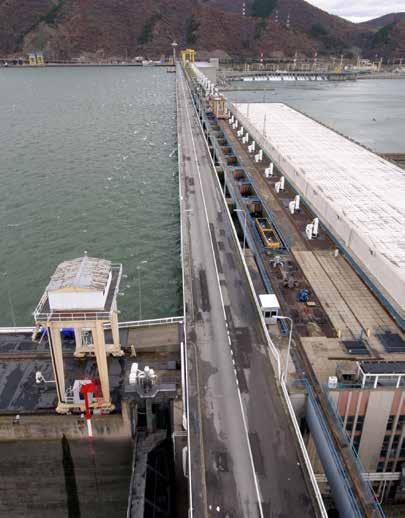
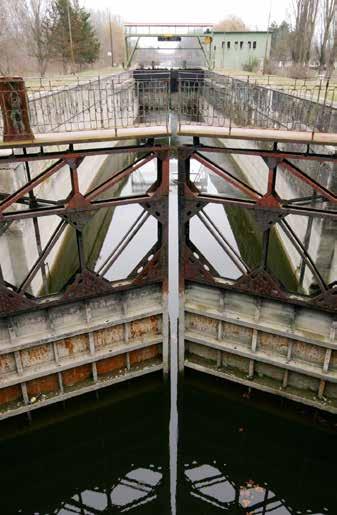
This immense monument of the industrialisation and electrifi cation of the 20th century was added to the natural and cultural unit of the Iron Gate in 1970. The temperament of the great river is tamed by the biggest dam on Danube, and its route through the Iron Gate George significantly reduced, allowing the largescale production of electricity. At the time the Iron Gate was built, it was the fourth biggest hydroelectric power plant in the world.
INDUSTRIAL HERITAGE IN SERBIA

www.tookladovo.rs www.djerdap.rs
CANALS AND LOCKS
For lowland Vojvodina in the north of Serbia, the building of large systems of canals and locks was a centuries-long challenge and a huge undertaking, which in the mid-20th century final ly stopped the flooding of the major rivers. Their courses were transformed into navigable waterways, some of which – like the Great Bačka Canal, the Little Stapar and the locks near Bezdan and Bečej – were top-class technological achievements of the time. During the construction of the lock near Bezdan under water concrete was used for the first time in Europe, and steel structures of the lock near Bečej were designed in the famous Eiffel studio in Vienna.
www.visitsombor.org www.tobecej.rs
Power plant “Djerdap”
Canal and lock, Bezdan
www.serbia.travel
THE ŠARGAN EIGHT
A unique narrow-gauge railway runs from the village of Mokra Gora to Šargan, part of the former railway that connected Bel grade and Dubrovnik via Sarajevo in 1925. Today, it has been transformed into tourist attraction and moving museum of rail transport. The railway winds in the shape of the figure “8” through mountainous regions of untouched nature, goes through 22 tunnels and under five bridges, and overcomes a 300 m climb in a short distance.
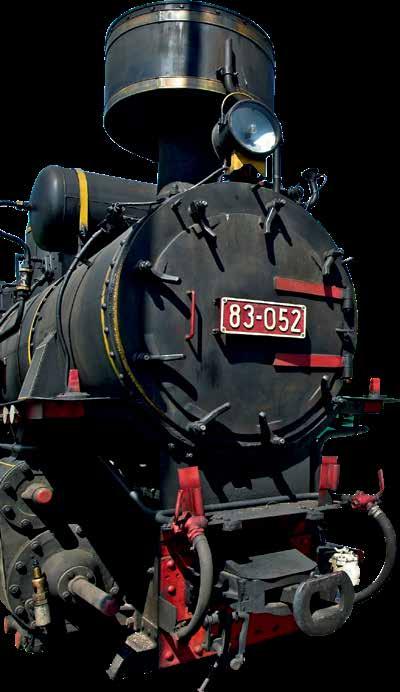
“NOVITET – DUNAV”, BEZDAN
“Novitet-Dunav”, a weaving workshop in Bezdan near Sombor, is an authentic place where the handmade production of silk damask fabric as well as old jacquard weaving technology has been nurtured for over 140 years. This enchanting, old-fashioned facility is not a museum but a living workshop where even today the finest of fabrics are made using 19th-century wooden looms.
www.novitet-dunav.co.rs
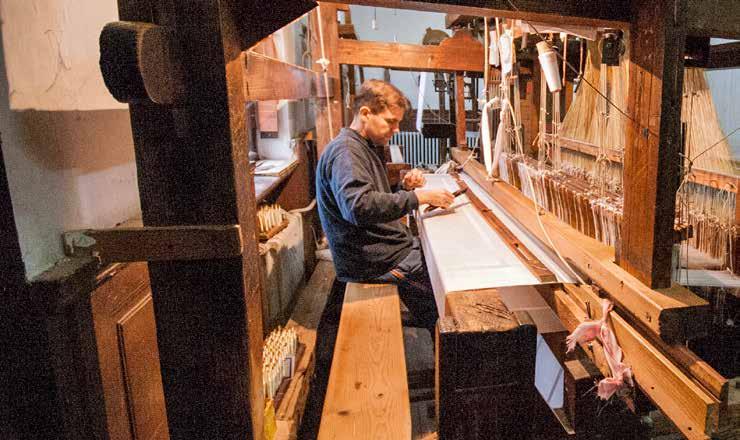 INDUSTRIAL HERITAGE IN SERBIA
INDUSTRIAL HERITAGE IN SERBIA
buking.sargan8@srbrail.rs www.turizamuzica.org.rs www.visitsombor.org
Šargan “8”
“Novitet – Dunav”, Bezdan
SENJSKI RUDNIK, DESPOTOVAC
A long time ago, in 1853, near Despotovac, the Aleksandrov pot kop (‘Alexander’s Shaft’) was opened, from which Senjski Rud nik, the oldest mining settlement in Serbia and the birth place of Serbian industry, would grow. The mining shafts, workshops, blacksmith shops and the rare steam-powered lift have been working since the 19th century to the present day without inter ruption. This extraordinary complex, which is complemented by the Coal Mining Museum, is a monument of culture and bears witness to mining history in a nutshell.
www.senjskirudnik.com www.resava-tourism.rs
VALJEVO BREWERY
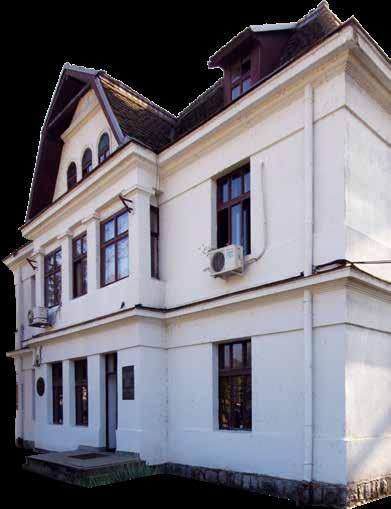

The brewery in Valjevo is sort of testament to the beginnings of the industrial production of beer, but also one of the symbols of the overall industrialisation and modernisation of Serbia at the end of the 19th century. Using steam plants and the cutting-edge technology of the time, the factory manufactured outstanding beer, like the famous Crno Valjevsko (‘Black Valjevo’) beer, during the first decades of the 20th century.
www.tov.rs
INDUSTRIAL HERITAGE IN SERBIA
Senjski rudnik, Coal Mining Museum, Despotovac
Valjevo Brewery
OLD FOUNDRY MUSEUM, KRAGUJEVAC
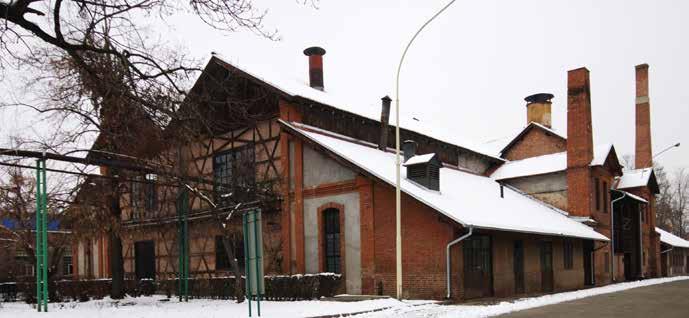
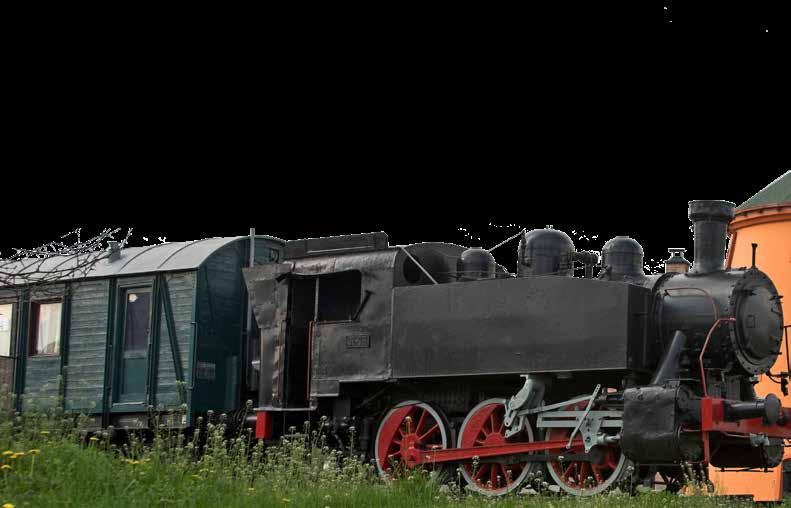
The industrial transformation of Serbia was announced with the start of operation of the cannon foundry in Kragujevac in 1853. The first arms factory in Balkans was equipped with mod ern mechanical lines for casting cannons. With the expansion of production, the foundry became the core of the unique mil itary-industrial complex known as Prince’s Arsenal. Today, the Old Foundry Museum is located in the oldest building of Serbian industry and houses a representative collection of arms and war equipment from the foundry’s production range.
OLD INDUSTRIAL ZONE, PANČEVO
Pančevo has an exceptional geographical position, at the cross roads of great waterways and overland routes, due to which it grew into an important commercial, industrial and cultural cen tre in the 18th century. The Old Industrial Zone on the Tamiš riv er, three kilometres long, bears witness to this strong economic boom of the town, and today it is one of the places with the largest concentration of industrial heritage in our country. The lighthouses, the Jovanović Brothers’ Printing Firm and the Weif ert Brewery – the oldest factory in the Balkans – are cultural mon uments of exceptional importance, while the old silk factory, the Red Warehouse, and the old mills are unique industrial facilities and the most advanced structural solutions of their time.
www.pancevo.info
INDUSTRIAL HERITAGE IN SERBIA
www.gtokg.org.rs www.muzej-topolivnica.rs
Old Foundry Museum, Kragujevac
Old Industrial Zone, Pančevo
IMPRESSUM
WE ALSO RECOMMEND:
Museum of Science and Technology www.muzejnt.rs
Nikola Tesla Museum www.nikolateslamuseum.org
“Broadcasting Equipment and Communications” Musem www.etv.rs/zasto-muzej
Military Museum www.muzej.mod.gov.rs
Railway Museum www.zeleznicesrbije.com
Automobile Museum www.automuseumbgd.com
Seismological Survey of Serbia www.seismo.gov.rs
ASSOCIATION OF TOUR OPERATORS IN SERBIA
YUTA - National association of travel agencies of Serbia www.yuta.rs/sr/receptiva/clanice-odbora-receptiva.asp
INDUSTRIAL HERITAGE IN SERBIA

Publisher: National Tourism Organisation of Serbia 8 Čika Ljubina Street, Belgrade, Serbia
Phone: +381 11 6557 100
Fax: +381 11 2626 767 e-mail: office@serbia.travel www.serbia.travel
serbiatourism serbia
For publisher: Marija Labović MSc, Acting Director
Editor: Smiljana Novičić
Professional consultant: MA Rifat Kulenović
Text: Jasmina Milovanović
Design: Marijana Markoska, PhD
Photography: Photo documentation of the Museum of Science and Technology Belgrade
Translator: Alkemist d.o.o.
Mapping board: Merkur SV
Map consultant: Olgica Miljković PhD
Print: Futura, Novi Sad
The 9th edition in English, 2022 Volume: 3,000
ISBN 978-86-6005-656-8
Cartographic no: 06 broj: 034-01-01-65/2022 - 13.04.2022.
The brochure was prepared in cooperation with the Museum of Science and Technology Belgrade.
Jasmina, 1972-
Cultural Treasures of Serbia / [text Jasmina Milovanović ; translator Slo bodan Rakić]. - 8th ed. in English. - Belgrade : National Tourism Organisation of Serbia, 2021 (Belgrade : Službeni glasnik). - [44] str. : fotogr.
24 x 20 cm
Kulturno blago Srbije. - Kor. nasl. - Podatak o autoru preuzet iz kolofona. - Tiraž 3.000. - Sadrži: Prehistory on Serbia’s Land ; The Roman Em pire in Serbia ; Monasteries of Serbia ; Fortresses in Serbia ; Galleries in Serbia ; Museum of Serbia ; Industrial heritage in Serbia / [text Jasmina Milovanović].
stv.
978-86-6005-656-8 (broš.
www.serbia.travel CIP - Каталогизација у публикацији Народна библиотека Србије, Београд 338.48(497.11)(036) 908(497.11)(036) MILOVANOVIĆ,
The
;
Izv.
nasl.:
ISBN
u zaštitnom omotu) а) Србија -- Водичи COBISS.SR-ID 39145225
THE CULTURAL TREASURES of SERBIA
INDUSTRIAL HERITAGE IN SERBIA
www.serbia.travel

 Cover photo: Dupljaja chariot, Middle Bronze Age
Cover photo: Dupljaja chariot, Middle Bronze Age







 Pločnik settlement, 5500 B.C.
Red hair goddess Starčevo culture 6300-5300 B.C.
Pločnik settlement, 5500 B.C.
Red hair goddess Starčevo culture 6300-5300 B.C.


































 KALE – THE TOWN INSIDE PIROT TOWN
KALE – THE TOWN INSIDE PIROT TOWN





 NOVI SAD
Jovan Bijelić, Girl with a book, 1929.
Petar Lubarda, Blue shop window, detail, 1930.
NOVI SAD
Jovan Bijelić, Girl with a book, 1929.
Petar Lubarda, Blue shop window, detail, 1930.












 Memorial of Nadežda Petrović, Contemporary Art Event
Memorial of Nadežda Petrović, Contemporary Art Event







 National Museum Belgrade, Piet Mondrian, The Composition II 1929.
Museum of Contemporary Art
Ethnographic Museum in Belgrade, rug from Pirot, 1st half of 20th century
Historical Museum of Serbia, The Gun of Stevan Knićanin, detail, 19th century
National Museum Belgrade, Piet Mondrian, The Composition II 1929.
Museum of Contemporary Art
Ethnographic Museum in Belgrade, rug from Pirot, 1st half of 20th century
Historical Museum of Serbia, The Gun of Stevan Knićanin, detail, 19th century







 Museum of Theatrical Arts of Serbia, The scenery for the play „Kirjanja“
Museum of Naive and Marginal Art Jagodina,Emerik Feješ, Old Belgrade around 1960
Old Village Open-Air Museum Sirogojno
Museum of Theatrical Arts of Serbia, The scenery for the play „Kirjanja“
Museum of Naive and Marginal Art Jagodina,Emerik Feješ, Old Belgrade around 1960
Old Village Open-Air Museum Sirogojno



 National Museum Valjevo, Replica of old districts Tešnjar
„Ras“ Museum, permanent exibition
National Museum Toplica, House of a weaver, 7.000 BC
National Museum Čačak, Festive mundir of Duke Petar Bojović, 20th century
National Museum Valjevo, Replica of old districts Tešnjar
„Ras“ Museum, permanent exibition
National Museum Toplica, House of a weaver, 7.000 BC
National Museum Čačak, Festive mundir of Duke Petar Bojović, 20th century



 MUSEUMS
MUSEUMS



 Museum of the Serbian Orthodox Church, Christ’s shroud of king Milutin end of 13th – beginnig of 14th century, detail
National Museum Zrenjanin, permanent exibition
Town Museum of Sombor, permanent exibition
National Museum Kikinda, permanent exibition
Museum of the Serbian Orthodox Church, Christ’s shroud of king Milutin end of 13th – beginnig of 14th century, detail
National Museum Zrenjanin, permanent exibition
Town Museum of Sombor, permanent exibition
National Museum Kikinda, permanent exibition












 INDUSTRIAL HERITAGE IN SERBIA
INDUSTRIAL HERITAGE IN SERBIA




 INDUSTRIAL HERITAGE IN SERBIA
INDUSTRIAL HERITAGE IN SERBIA




